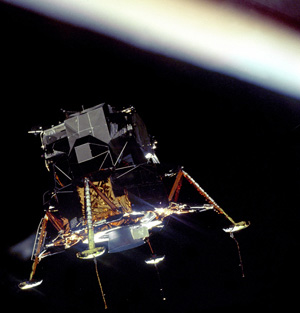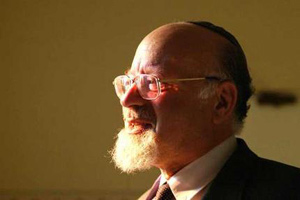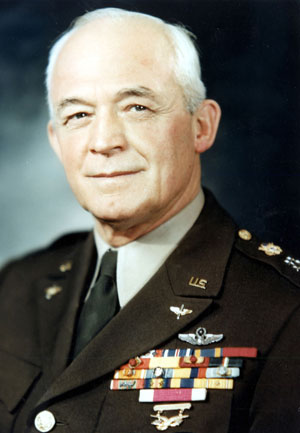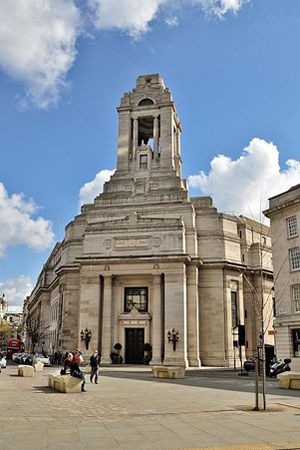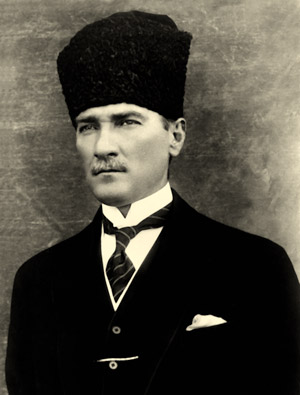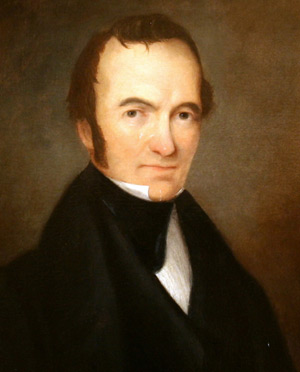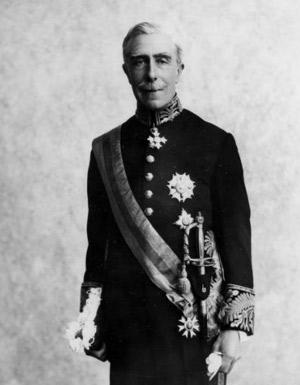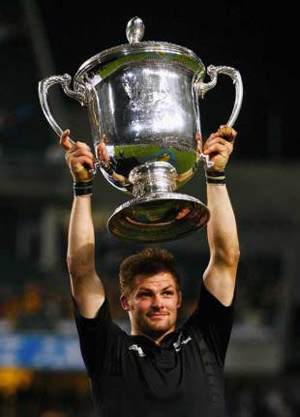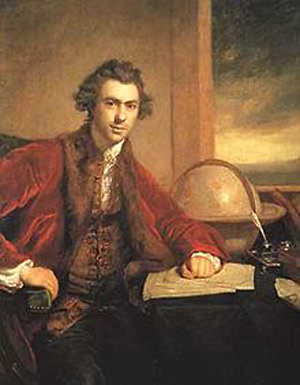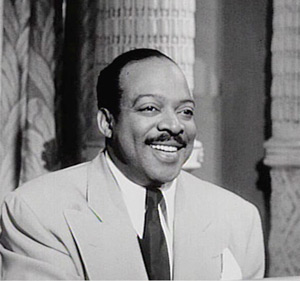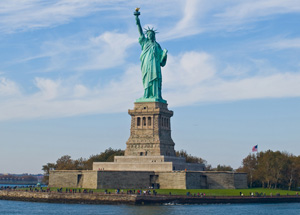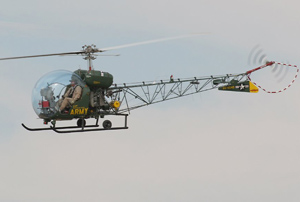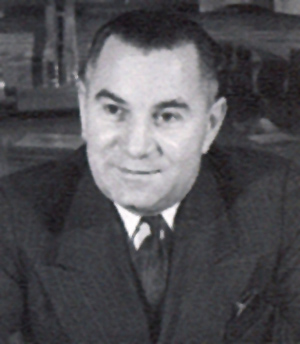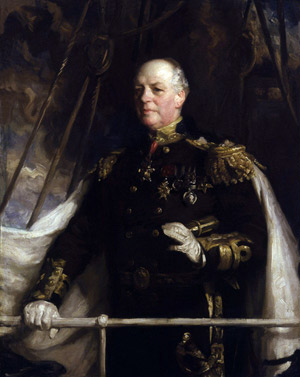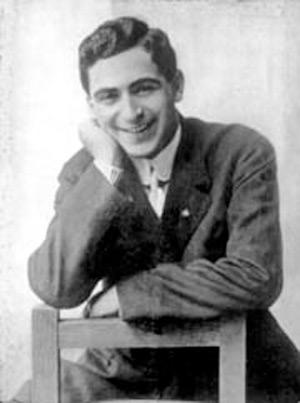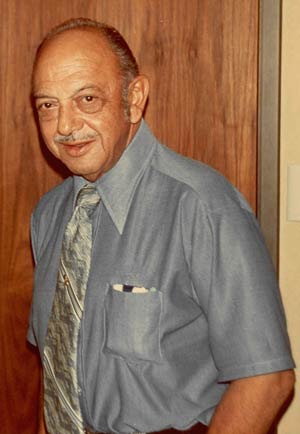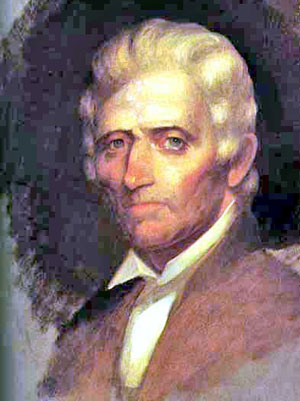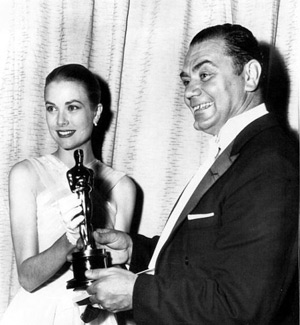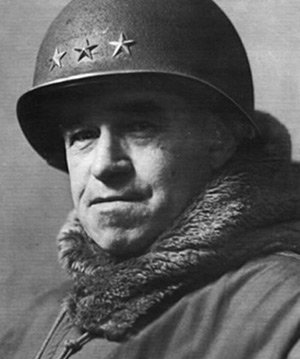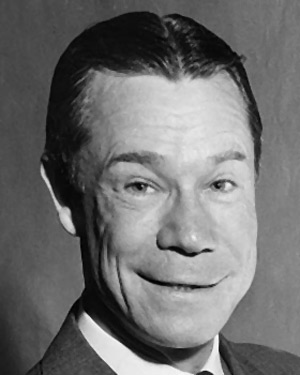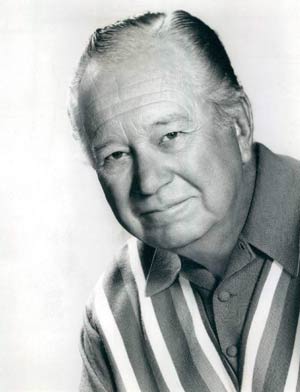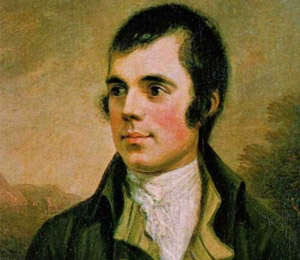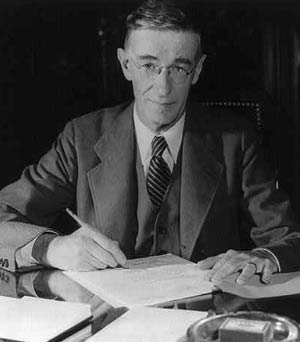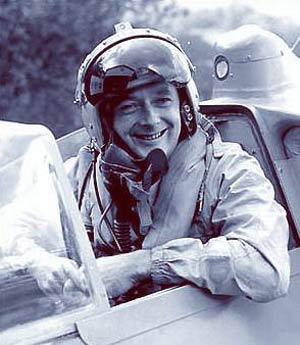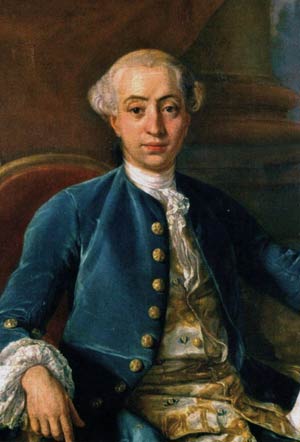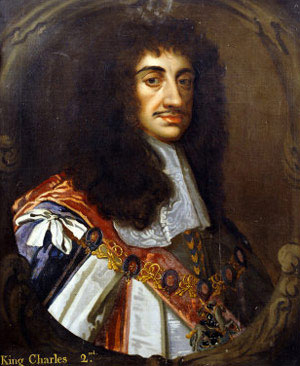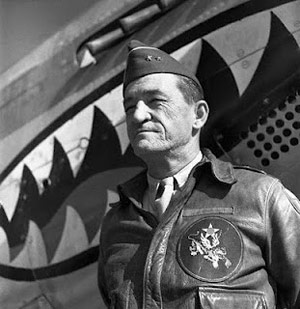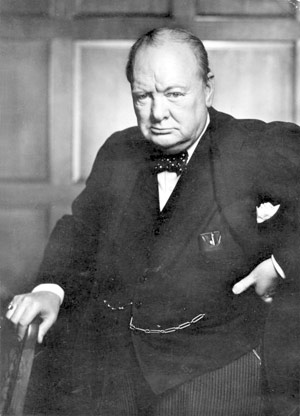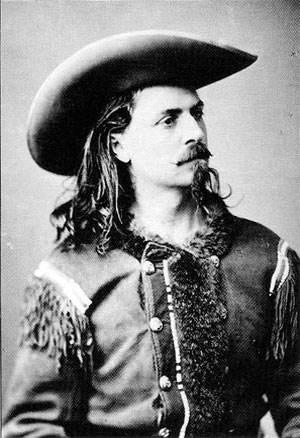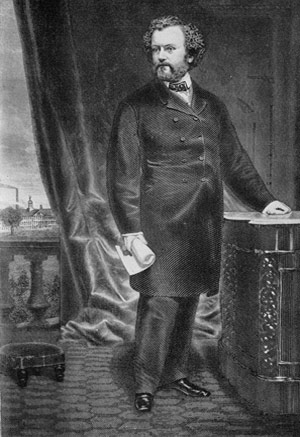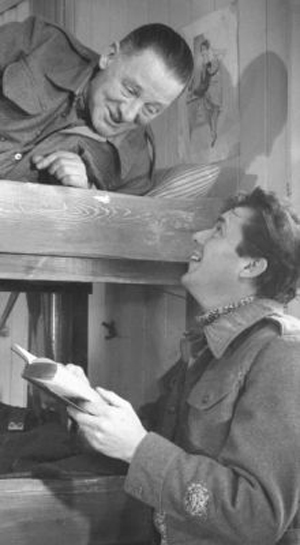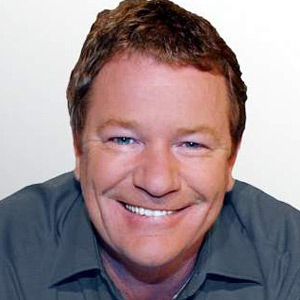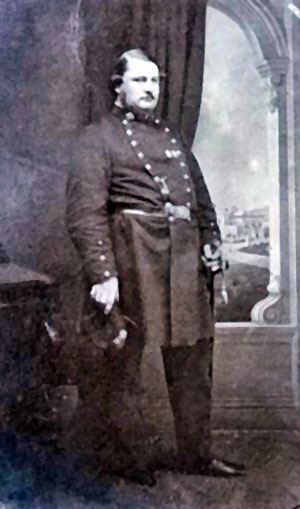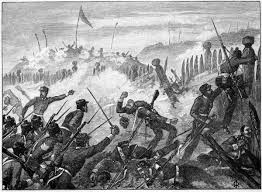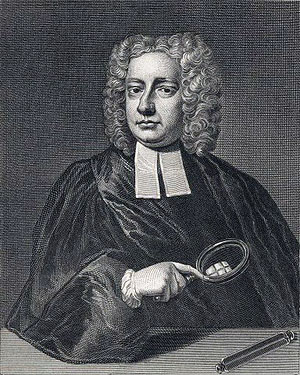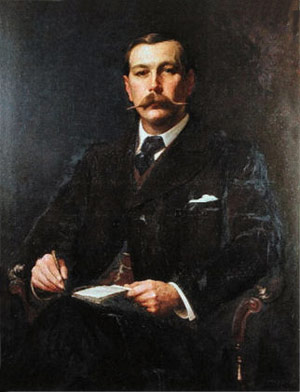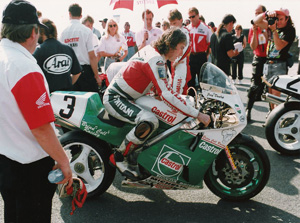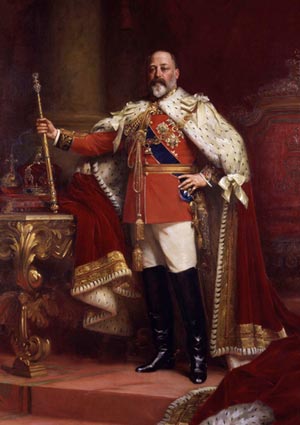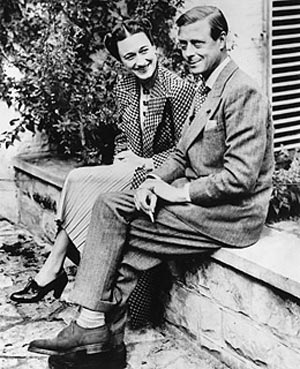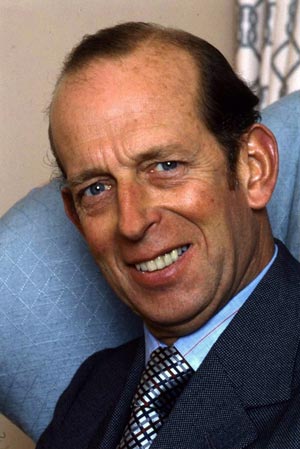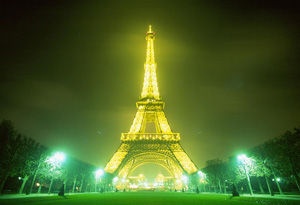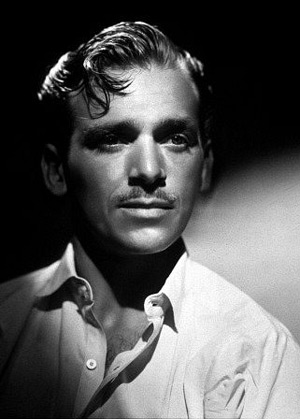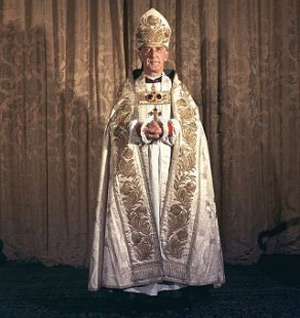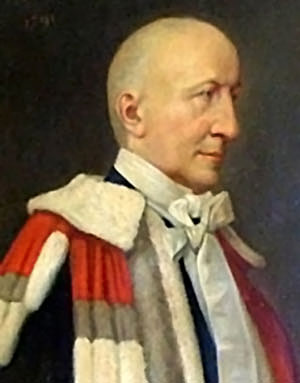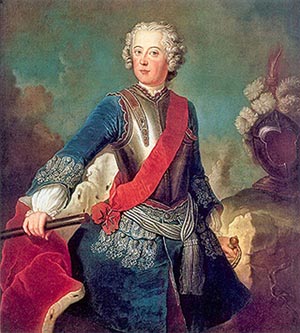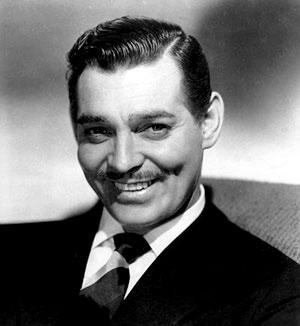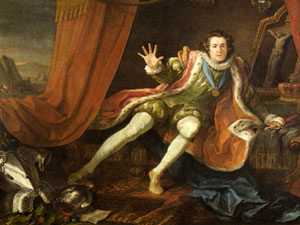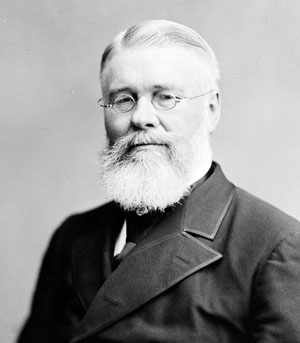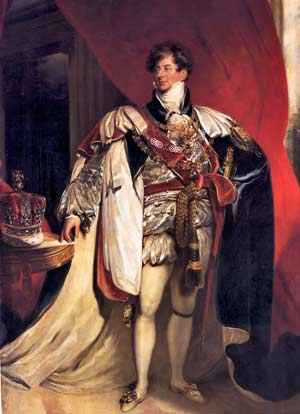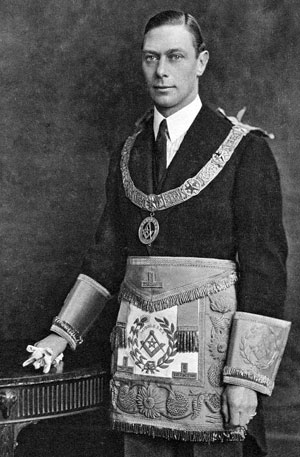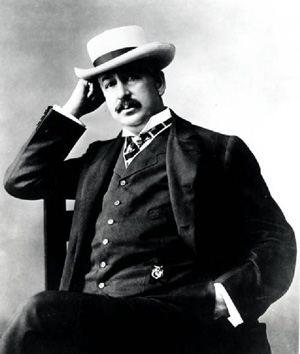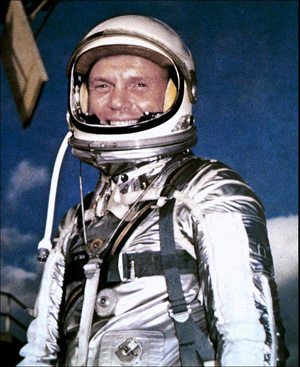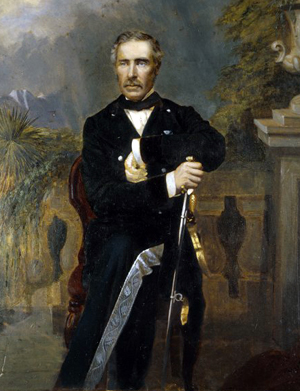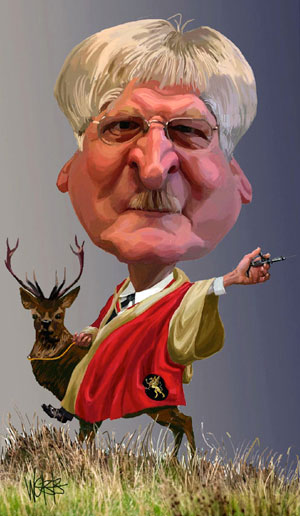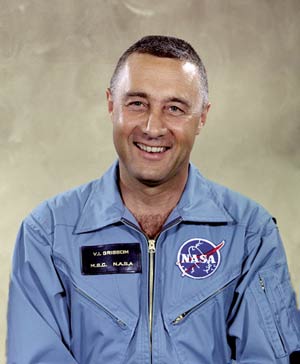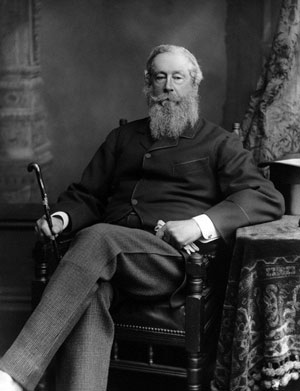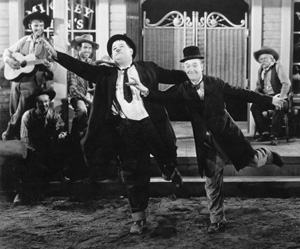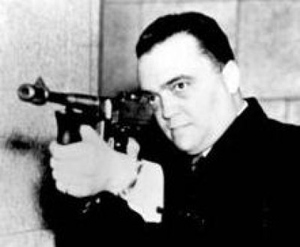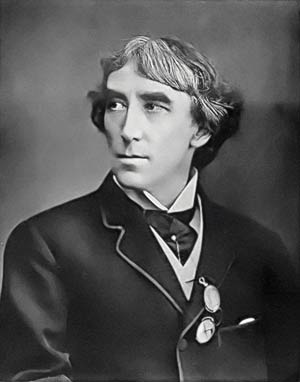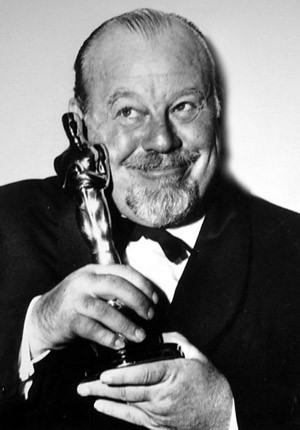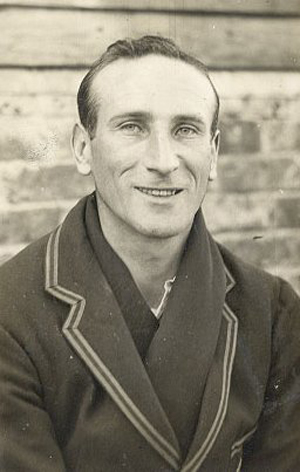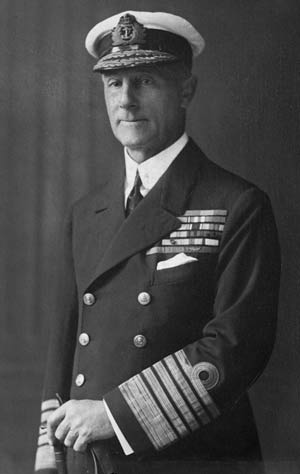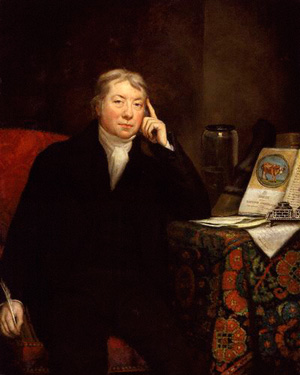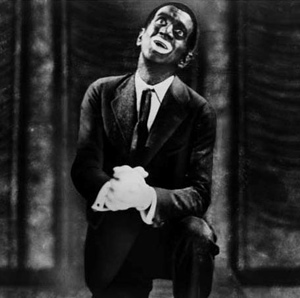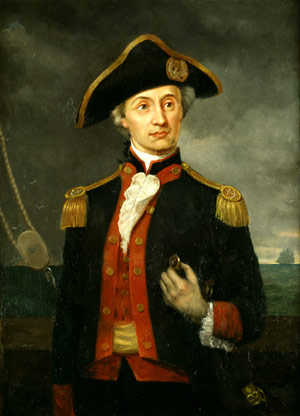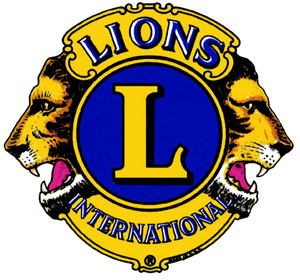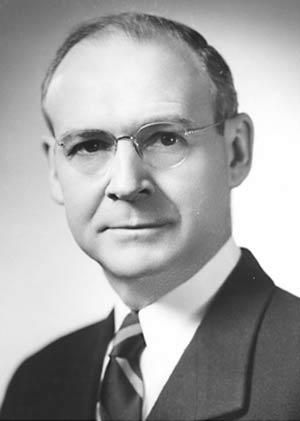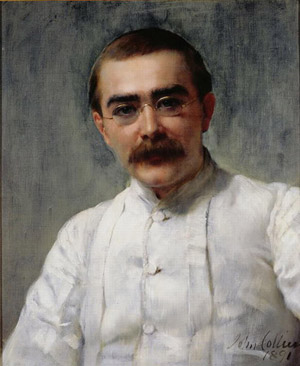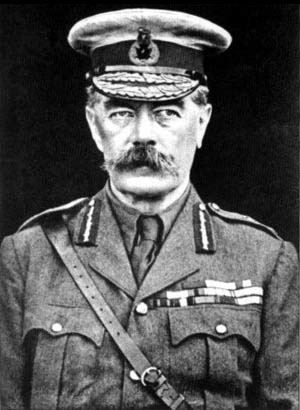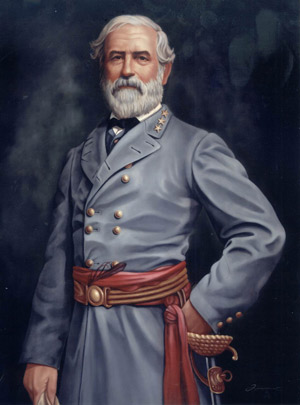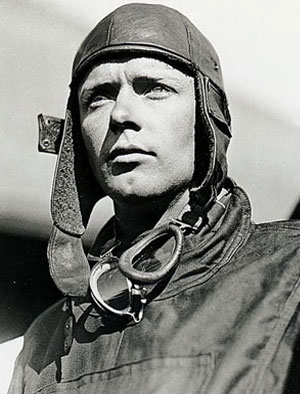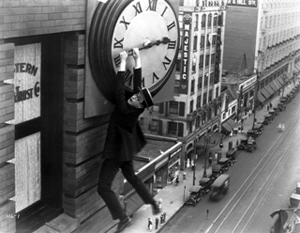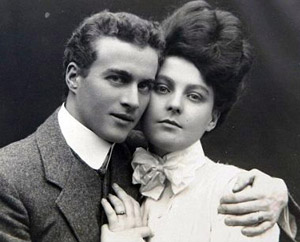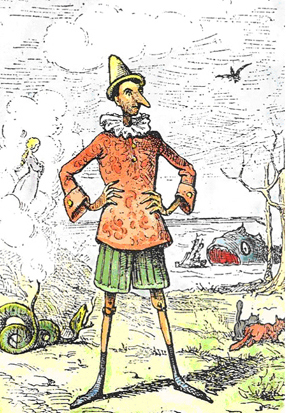| Famous Freemasons A-L | |||
| Famous Freemasons M-Z | |||
| Appendix | |||
| Acknowledgements |
Famous Freemasons
Throughout history some members of the fraternity have made no secret of their involvement, while others have not made their membership public. Following is an abridged list of Freemasons, many of whom for various reasons have become household names. They come from all walks of life; from carpenters to Kings, mechanics to musicians; they also span the spectrum of the world’s religions Catholics and Protestants, and from Anglicans to Zionists. Whether in the public eye, or without, Freemasons are individuals, yet bound together to make a difference within society, and the vast majority have vowed to attempt to improve the lot of those in distress - wherever and whoever they may be.
“ ...and to so high an eminence has its credit been advanced that even monarchs have been promoters of the Craft; have not thought it beneath their dignity to exchange the Sceptre for the Trowel; have become members of our Society, and taken part in our assemblies.”
You may be surprised by some of the names you find here...
Abbott, William ‘Bud’ (1897-1974) – Bud Abbott was one half of the famous Abbott and Costello comedy duo. He was a comedian, actor and producer. Teaming up with comedian Lou Costello in 1936, Abbott was the ‘straight man’ and, between 1940 and 1956, they made 36 films together and, since they took a share of the profits from each movie, the pair became two of the highest paid stars in the world. When her husband left her, Abbott took over the running of his sister’s household, and he also adopted two children with his wife, Betty Smith. Bro. Abbott was a member of Daylight Lodge No. 525, Michigan.
Abd al-Qadir al-Jaza’iri, Sufi (1808-1883) – A Sufi (Islamic mystic), scholar and political leader, Abd al-Qadir or Abd al-Qadir al-Jaza’iri, was an Algerian who led a struggle against the French invasion in the mid-nineteenth century, for which he is seen by some Algerians as their national hero. In 1864 he was a Freemason in Lodge Henri IV in Paris, but his degree work was conducted at the Lodge of the Pyramids, Alexandria, Egypt.
Abrahams, Harold Maurice (1899-1978) – Harold Abrahams was an English-Jewish athlete who, in 1924, became ‘the fastest man alive’ when he won the 100 metres at the Olympic Games in Paris. His feat was depicted in the outstanding film ‘Chariots of Fire’, memorable not just for its hunting theme music but also as the winner of the Oscar® for Best Picture in 1981. Abrahams’ great friend, and the man who won the Bronze Medal in the 1924 race, Arthur Porritt, later became the Governor-General of New Zealand.
Aguinaldo, Emilio (1869-1964) – As President of the Philippine Islands, Aguinaldo declared their independence in 1898. Aguinaldo was a member of Pilar Lodge No.203 (now Pilar Lodge No.15) at Imus Cavite; he was also a founder of Magdalo Lodge No.31 (renamed Emilio Aguinaldo Lodge No.31 in his honour).
Aldrin, Edwin Eugene ‘Buzz’ (1930 - ) – Buzz Aldrin is a mechanical engineer, an ex- USAF fighter pilot and an astronaut. On 20 July 1969, as the pilot of Apollo 11’s Lunar Module, he famously became only the second human to walk on the moon. At the time of his lunar landing, Aldrin was a member of Clear Lake Lodge No. 1417, Seagate, Texas and, in the wake of Aldrin’s space mission, the Grand Lodge of Texas formed Tranquillity Lodge No. 2000, named after Tranquillity Base, the location of Apollo 11’s landing site.
Aldrin is now a member of Montclair Lodge No.144, New Jersey.
Allcock, Anthony (1955- ) – “For a seemingly simple game, bowls is a highly complex sport and Tony Allcock is one of its greatest and most complex champions.” So said ‘The Daily Telegraph’ newspaper of one of the sport’s most successful players Leicestershire-born, Tony Allcock, who won 14 world titles during his career and was appointed England’s Bowl’s Coach for the 2002 Commonwealth Games.
Successful in virtually all he attempts, Tony Allcock is a champion horseman and, in 2002, even won a medal at Crufts - for his dog of course! He is currently CEO of Bowls England.
Amery, Leopold Charles Moritz Stennett (1873-1955) – Leo Amery was born in India of an English father and Hungarian-Jewish mother. He was a British Conservative Party politician and journalist, noted for his interest in military preparedness, India and the British Empire. As a contemporary of Winston Churchill (see below), Amery studied at Harrow. Later in his career in parliament, he was one of the forces that finally and vitally dislodged Prime Minister Neville Chamberlain from office in May 1940.
Apple, Rabbi Raymond (1935 - ) – As Chief Rabbi in the Great Synagogue in Sydney (1972-2005), Raymond Apple became the leading spokesman for Judaism in Australia. Apple is the Past Deputy Grand Master of the United Grand Lodge of New South Wales and a frequent writer on subjects Masonic, including ‘Studies, Speeches and Sensibilities’ 2010 - ISBN 9780980758405
Appleton, Sir Edward Victor (1892-1965) – Appleton was an English Physicist, who won the Nobel Prize in 1947 for his investigations of the physics of the upper atmosphere. He was a member of Isaac Newton Lodge No.859, Cambridge, England.
Arne, Thomas Augustine (1710-1778) – Arne was the leading British theatre composer of the 18th Century working at Drury Lane and Covent Garden. He is probably best known for the patriotic song ‘Rule, Britannia!’ (1740) but he also wrote a version of ‘God Save the King’ (1775), that was to become the British national anthem and the second national anthem of New Zealand. In 1777, Arne also penned the song ‘A-Hunting We Will Go’. Arne was a Freemason and active in the organisation, which has long been centred around the Covent Garden area of London, of which he was a native.
Arnold, Benedict (1741-1801) – Arnold was an American Revolutionary War General and a member of Hiram Lodge No. 1, New Haven, Connecticut.
Arnold, General Henry ‘Hap’ (1886-1950) – This ‘Medal of Honour’ recipient and American General helped to establish what is now the United States Air Force. Hap Arnold was the commander of the U.S. Army Air Force in World War II.
Arouet, François-Marie ‘Voltaire’ (1694-1778) – Arouet was a French Enlightenment essayist and philosopher, better known by his pen name Voltaire. Famous for his wit, he was an outspoken supporter of social reform, despite strict censorship laws and harsh penalties at the time for those who broke them. As a satirical polemicist, he frequently made use of his works to criticize intolerance, religious dogma and the French institutions of his day. He was initiated in 1778, by the then Worshipful Master, Ben Franklin, (see below) at Loge des Neuf Sœurs in Paris, but sadly was a Mason for less than two months prior to his death.
Prince Arthur, Duke of Connaught and Strathearn (1850-1942) – Born in Buckingham Palace on 1st May 1850, Prince Arthur was the 3rd son of Queen Victoria. He joined the British army aged 16 and served with distinction in various parts of the Empire for 40 years, during which time he was made Duke of Connaught and Strathearn. He also served as Governor General of Canada in the early part of World War I.
When Prince Edward (see below) was crowned king in 1901, Prince Arthur was elected Grand Master of the United Grand Lodge of England (See UGLE in the appendix below.) and, in 1939, became the longest serving GM in history. Arthur was responsible for commissioning the building of Freemasons’ Hall, on the original site of Grand Lodge in London, as a memorial to the thousands of Freemasons who died in The Great War.
Ashmole, Elias (1617-1698) - Antiquary, astrologist, alchemist and politician, Elias Ashmole became a Freemason in 1647, being initiated into Warrington Lodge, Warrington, Cheshire, England. Ashmole is the earliest Freemason thus recorded in England. He was a founder of ‘The Royal Society of London’ with Sir Robert Moray and King Charles II (see below), and founded the Ashmolean Museum, Oxford.
Astor, Johann Jacob ‘John’ (1763-1848) – From lowly beginnings, being a poor German immigrant to the U.S., at one point John Astor was considered to be the wealthiest man in America. Astor became Master of Holland Lodge No.8 in New York, NY in 1790 and served as Grand Treasurer for their Grand Lodge.
Atatürk, Mustafa Kemal (1881-1938) – An army officer, revolutionary, statesman and writer, Kemal Atatürk is the national hero and founder of the modern Republic of Turkey. He was also the first Turkish president. Kemal fought at Gallipoli against the Australian and New Zealand (ANZAC) Forces. He revolutionised and transformed the former Ottoman Empire into a modern and secular nation-state. He was a member of Macedonia Risorta Lodge No.80 in Thessaloniki.
Austin, Stephen Fuller (1793-1836) – A colonizer and political leader, Austin first worked to make Texas a state of Mexico, but later helped the American and European settlers of Texas gain their independence (1836). He is acclaimed as “The Father of Texas” and the city of Austin, Texas is named after him. Austin was a keen and dedicated Freemason, a member of Louisiana Lodge No.109 in Ste. Geneviere, Missouri, and worked hard to establish Freemasonry in Texas from 1825 onward, but the delicate political climate of the time badly hindered his progress. (The Mexican General López de Santa Anna was also Mexico’s dictator and, then as now, dictators feel threatened by Freemasons.)
Autry, Orvon Eugene ‘Gene’ (1907-1998) - An American actor who made some 90 films from the 1930’s through to the 1950’s, Gene Autry was a cowboy singer ('Back in the Saddle Again' and more similar songs). His new found wealth was such that it enabled Autry to own the California Angels baseball team. Many young people have grown up listening to his rendition of ‘Rudolph, The Red-Nosed Reindeer’.
Gene Autry was a member of Catoosa Lodge No.185, Oklahoma and, according to his Masonically inscribed gravestone, Brother Autry was “a true gentleman”.
Bach, Johann Christian (1735-1782) – The eleventh and youngest son of the cele- brated composer, Johann Sebastian Bach, Johann Christian was a composer of the Classical era. He is sometimes referred to as ‘the London Bach’ or ‘the English Bach’, due to his time spent living in the British capital. He is noted for influencing the con- certo style of Mozart. Brother Bach belonged to the influential Lodge of Nine Muses No.235 in London.
Baigent, Michael (1948- ) – Born in Christchurch, New Zealand, Michael Baigent’s upbringing was Catholic and he was tutored in Catholic theology from the age of five. While a student at Canterbury University in Kent, England, he studied comparative religion and philosophy, studying Buddhism, Hinduism and Christianity. He travelled to Australia and Southeast Asia and finally settled in England. In 1982, he co-wrote the book ‘The Holy Blood and the Holy Grail’, that Dan Brown used for the basis of his smash-hit novel, ‘The Da Vinci Code’. (SEE DAN BROWN ‘THE LOST SYMBOL’ ELSEWHERE ON THIS WEB SITE.) Baigent was a Grand Officer of the UGLE, he had been editor of the UGLE’s siren magazine, ‘Freemasonry Today’ since April 2001, a platform he used for a more liberal approach to Freemasonry. He was also a trustee of the Canonbury Masonic Research Centre.
He died of a brain haemorrhage in Brighton Hospital, England on 17th June 2013 following a period of ill health.
Michael Baigent belonged to the Lodge of Economy No. 76 in Winchester, where he was initiated, and also to Prince of Wales’ Lodge No. 259, London.
Ballard, Harold E. (Given name: Edwin Harold Ballard) (1903-1990) – Born in Toronto, Canada, Harold Ballard was the feisty owner the Toronto Maple Leafs National Hockey League team from 1961 until the time of his death. His mother lodge was Lodge Corinthian No. 481, GRC, Toronto, Ontario.
Bathurst, Charles – 1st Viscount Bledisloe (1867-1958) – Born in London and educated at Eton and Oxford, Charles Bathurst, a qualified barrister, became a Member of Parliament and served as a Privy Councillor to King George V (see below). For his services to King and country during and post-World War I he was made a Knight Grand Cross and, in 1930, appointed Governor General of New Zealand.
As Lord Bledisloe, Charles Bathurst arrived in his new post at the very start of The Great Depression but handled his position well and, being a man of social conscience, became well liked and respected by all who met him. He contributed greatly to the improvement of Pākehā – Māori relations and, as a mark of the respect he held for the Māori king, purchased the site on which ‘The Treaty of Waitangi’ was signed and, in 1934, Bathurst presented the land to the nation as a memorial.
A tremendous aficionado of rugby union, and enjoying the friendly rivalry constantly in vogue between Australia and New Zealand, in 1931 Lord Bledisloe conceived the idea of a rugby trophy competition over which the two nations could fight. In 1932, the first of three ‘Bledisloe Cup’ matches were played in Australia where the All Blacks emerged victorious and, since that date, the Kiwis have won the cup 40 times. Physically the Bledisloe Cup is the largest trophy in rugby: it was designed in New Zealand by Nelson Isaac and crafted in London by prestigious jewellers, Walker & Hall. Lord Bledisloe was a dedicated Freemason and, during his tenure as Governor General, he served as the Grand Master of the New Zealand Constitution (1930-33).
Banks, Sir Joseph – 1st Baronet (1743-1820) – This noted naturalist accompanied Captain Cook on his journey from England across the South Pacific to New Zealand (1768-1771). His was elected to The Royal Society of London (see article on this web site) in 1766 and, in 1778, became its’ President. A botanical advisor to King George III (see below), Joseph Banks is credited with introducing acacia (see appendix), ‘Banksia’, eucalyptus and mimosa to the Western world. The beautiful, Banks Peninsula on the east coast of the South Island of New Zealand is named after him as are Banks Islands in Vanuatu.
Barnardo, Dr. Thomas John (1845-1905) – Founded in 1866 by this Dublin-born doctor to relieve the suffering of homeless starving children in London’s East End, by the time of his death in 1905 Dr. Barnardo’s Homes cared for 8,500 youngsters in 96 locations. More than 140 years later, this caring Irishman’s charity work with children still, sadly, needs to go on.
Bartholdi, Frédéric Auguste (1834-1904) – This French Freemason was the sculptor responsible for New York’s Statue of Liberty. His ‘Mother Lodge’ (as a Freemason’s Lodge of initiation is termed) was Lodge Alsace-Lorraine, Paris. During the construction of the copper-clad monument, Bartholdi leaned heavily on another Freemason’s expertise, that of Gustave Eiffel, designer of the Eiffel Tower, for the intricate steel skeleton supporting the soaring statue.
Barton, Edmund (1849-1920) – The first Prime Minister of the Commonwealth of Australia, and Speaker of the Legislative Assembly, New South Wales, Edmund Barton was the Attorney General and judge of the Australian High Court. His greatest contribution to Australian history was his management of the federation movement through the 1890’s.
Basie, William James ‘Count’ (1904-1984) – A brilliant, African-American orchestra leader and composer, Basie led his band almost continuously for 50 years! Basie was also a friend of Frank Sinatra, with whom he recorded in 1962 and 1964. A member of Wisdom Lodge No.102 (Prince Hall), Chicago, Basie was also a noted ‘Shriner’ (see appendix).
Bell, Lawrence (1894-1956) – Lawrence Bell was the head of the Bell Aircraft Corporation, one of whose aircraft, the X-1, piloted by Captain Charles ‘Chuck’ Yeager, famously broke the Sound Barrier in level flight on 14 October 1947. Subsequent Bell aircraft developments went on to exceed Mach 6.72 or 2,021 metres per second (7,273Km/h – 4,519mph), a feat achieved by the X-15A-2 on 28 June 1964 by test pilot Pete Knight. NASA astronaut and the first man to walk on the moon, Neil Armstrong, was also a Bell X-15 pilot. (Related: see Buzz Aldrin above.)
Beneš, Edvard (1884-1948) – Elected in 1935 as President of Czechoslovakia, Beneš led his nation’s government into exile after the outbreak of World War II and ran the country from offices near London (1940-1945). He resigned in 1948 when he was forced to yield to a Communist directed cabinet, but died of natural causes the same year. Beneš belonged to Ian Amos Komensky Lodge No.1, Prague.
Beresford, Admiral Charles William de la Poer – 1st Baron Beresford (1841-1919) – Of Irish decent, Charles Beresford combined the two careers of being in the navy and being a Member of Parliament, making a reputation as a hero in battle and champion of the navy in the House of Commons. Beresford was driven to become First Sea Lord and his later career was marked by a long-standing dispute with the Admiral of the Fleet, Sir John Arbuthnot Fisher (see below), over reforms championed by Fisher introducing new technology and sweeping away traditional practices. (This dispute held both of their careers back, yet Fisher’s reforms were sorely required by a stagnated Royal Navy.) Beresford rose to occupy the most senior sea commands, the Mediterranean and Channel fleets, but failed in his ambition to become the first Sea Lord.
Berlin, Irving (Real name: Israel Isidore Baline) (1888-1989) – Composer, lyricist and a long-time member of Munn Lodge No.190 in New York, Brother Berlin is widely considered the greatest song writer in history. This American-Jewish genius wrote more than 1,500 songs, including ‘Alexander’s Ragtime Band’ (1911), the Oscar® winning ‘White Christmas’ (1940), and several musical comedies such as ‘Annie Get Your Gun’ (1946) and ‘There’s No Business Like Show Business’ (1954).
Berlusconi, Silvio (1936- ) – A controversial Italian media tycoon and politician, Silvio Berlusconi belonged to Lodge Propaganda Due, but his disreputable excesses (outside the realm of Masonry), caused him to be expelled in 1981 by the Grand Orient of Italy.
Besant, Sir Walter (1836-1901) – Walter Besant was a novelist and historian who lived largely in London. A dedicated Freemason, he served as Master Mason in the Marquis of Dalhousie Lodge, London from 1873. Together with ‘Jack the Ripper’ investigator, Sir Charles Warren (see below), he conceived the idea of a Masonic lodge of research, the Quatuor Coronati Lodge No.2076, of which he was first treasurer from 1886.
He was treasurer of the ‘Atlantic Union’, an association which sought to improve social relations between Britons and Americans.
Bishop, Sir Henry Rowley (1786-1855) – Henry Bishop was an English music composer most famous for the songs ‘Lo, Hear The Gentle Lark’ and ‘Home! Sweet Home!’ a song which was very popular with soldiers during and after the American Civil War. Bishop was also the composer or arranger of some 120 dramatic works, including 80 operas, light operas, cantatas, and ballets. In 1842, he became the first musician ever to be knighted, having worked for all the major theatres of London in his era — including the Royal Opera House at Covent Garden, the Theatre Royal, Drury Lane, Vauxhall Gardens and the Haymarket Theatre. He was also Professor of Music at Oxford University.
Blanc, Mel (Real name: Melvin Jerome Blank) (1908-1989) - If you have heard cartoon characters ‘Bugs Bunny’, ‘Wile E. Coyote’, ‘Elmer Fudd’, ‘Barney Rubble’ (of the Flintstones), ‘Daffy Duck’, ‘Porky Pig’ and ‘Sylvester the Cat’, then you’ve heard the voice of Mel Blanc, who brought so much pleasure to so many children (young and old), for so many years. Known as “The Man of a Thousand Voices”, at the time of his passing to the Grand Lodge Above in 1989, it was estimated that 20 million people heard his voice everyday – most just didn’t know it! Mel Blanc joined the Order of DeMolay (see appendix) as a young man, and was a Freemason for 50 years.
Bolívar, Simón (Given name: Simón José Antonio de la Santísima Trinidad Bolívar y Palacios Ponte y Blanco) (1783-1830) - Commonly known as Simón Bolívar: together with José de San Martín (see below), Bolívar was a Venezuelan military and political leader, and he played a key role in Hispanic America’s successful struggle for independence from the Spanish Empire. Simón Bolívar is regarded in Hispanic America as a hero, visionary, revolutionary, and liberator. During his lifetime, he led Bolivia, Colombia, Ecuador, Panama, and Venezuela to independence, and helped lay the foundations for democratic ideology in much of Hispanic America.
Similar to many others in the history of North and South American independence (George Washington, José de San Martín, and Francisco de Miranda), Simón Bolívar was a Freemason. He was initiated in 1803 into the Masonic Lodge Lautaro, this lodge operated in Cadiz, Spain. It was in this lodge that he first met some of his revolutionary peers, such as José de San Martín. In May 1806, he was conferred the rank of Master Mason in the ‘Scottish Mother of St. Alexander of Scotland’ in Paris. During his time in England, he frequented ‘The Great American Reunion’ lodge in London, founded by Francisco de Miranda. In April 1824, Simón Bolívar was given the 33rd degree of Inspector General - Honorary. It is also recorded that he was a founding brother of Lodge Order and Liberty No. 2, Peru in 1824.
Boone, Daniel (1734-1820) – Of English and Welsh decent, Daniel Boone was born in Pennsylvania and, as a pioneer, explorer (especially of Kentucky) and frontiersman, he became one of America’s first revered folk heroes. Although his Masonic membership is difficult to prove, here is what Nathan Boone had to say about his father’s funeral: “Father’s body was conveyed to Flanders Callaway’s home at Charette, and there the funeral took place. There were no military or Masonic honours, the latter of which he was a member, as there were then but very few [Freemasons] in that region of the country.”
Borgnine, Ernest (Born: Ermes Effron Borgnino) (1917-2012 ) – Ernest Borgnine was a skilled film and television actor, receiving in 1955 the Best Actor Oscar® for his lead role in the film ‘Marty’. He was more famously known to a generation of television fans for his role as the Skipper in ‘McHale’s Navy’. Borgnine generously served Freemasonry and was the Honorary Chairman of a programme to support the ‘Scottish Rite Childhood Language Centre’ in Richmond. Ernest Borgnine was initiated into Abingdon Lodge No.48, California, and there is evidence that he was also a member of Melrose Lodge No.63 in California. Frankly, it can be said that Ernest Borgnine was an exceptional member of the Craft.
Boswell, James-9th Laird of Auchinleck (1740-1795) – A Scottish writer most noted for writing a biography of his friend, Samuel Johnson. Boswell was raised in Canongate Kilwinning Lodge in Edinburgh in 1759.
Bowell, Mackenzie (1823-1917) – The English-born, 5th Prime Minister of Canada (1894-1896), Bowell instigated the first meeting of British Colonies and territories (between Australia and Canada) in Ottawa in 1884. Bowell was a Freemason AND an Orangeman, becoming Grand Master of the Orange Order of British North America, 1870-1878.
Bowie, James ‘Jim’ (1796-1836) – Jim Bowie was an American-born frontiersman and Mexican colonist who joined the so called ‘Texian’ forces during their struggle for the independence of Texas from Mexico. He is often credited with being the inventor of the famous ‘Bowie Knife’, although that accolade should go to his brother, Rezin Bowie. James Bowie had a well-deserved reputation for being a ferocious fighter, especially with a knife, yet despite his increasing fame he never talked about his exploits. Frontiersman Captain William Y. Lacey, who spent eight months living in the wilderness with Bowie, described him as a humble man who never used profanity or vulgarities.
In the 21st Century, all that can be determined is that Jim Bowie was a most extraordinarily tough man indeed and well entitled to his world renowned status - It has to be said, “What an extraordinary individual.” During ‘The Battle of the Alamo’ on the 6 March 1836, though servirly ill with typhus at the time, Bowie died as bravely as he had lived, alongside other notable Freemasons, Davy Crockett and Jim Travis (see below). Jim Bowie was a member of L’Humble Chaumiere Lodge No.19, Opelousas, Louisiana.
Bowes, William Eric ‘Bill’ (1908-1987) – Bill Bowes never looked like a cricketer. Indeed he was a cricketing odd-ball: a very poor batsman and an ‘iffy’ fielder. Yet, once he had ball in hand, on a good pitch, no world-class batsman could feel confident (especially when facing a new ball), Bowes bouncers, and deceptively swerving deliveries, claimed the best. When he wrote for Wisden, his focus was on the ‘everyday’ cricketer and a belief that club cricket, not county or Test cricket, should be seen as the core and building block for the international game.
Bradley, Omar Nelson (1893-1981) – A leading US general during World War II, Omar Bradley played a major part in the Allied victory in Europe. Following ‘The Battle of the Bulge’ in 1944/45, Bradley commanded the 12th Army Group, a force of 1.3 million men. Eisenhower considered Bradley, “America’s foremost battle leader.” He was a member of West Point Lodge No.877, New York.
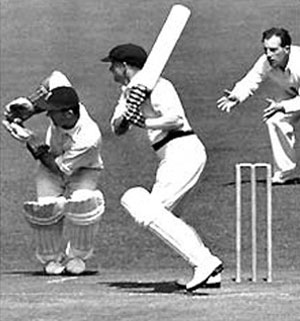

Even in the 21st Century, as a batsman in cricket Don Bradman has no equal.
Picture: COPYRIGHT © BBC
Bradman, Sir Donald George ‘Don’ – (1908-2001) – With a Test average of 99.94, Don Bradman is unquestionably cricket’s greatest batsman and, arguably, the greatest cricketer ever. Indeed, Bradman was so far ahead of the competition as to render comparisons meaningless as he transcended the game he graced.
In the early 1930’s Anglo-Australian relations had sunk to a low ebb, not least due to English captain Douglas Jardin’s shameless introduction of ‘Bodyline’ attack in an attempt to curb Bradman’s ascendancy. By 1938, however, both countries were anxious to reinforce the imperial bond in the face of potential war. Britain feared Germany; Australia feared Germany’s ally, Japan. Bradman was a firm believer in the British Empire; he was a Protestant, a Freemason, an imperialist and a conservative who strongly opposed what he saw as the anti-British tendency of Irish Catholics in Australian cricket. Indeed, Bradman’s bitter dispute with nationalists Bill O’Reilly, Jack Fingleton and others did him no harm in England. Britain saw the best side of Bradman. His integrity, his respect for the monarchy, and his generosity (when fellow Freemason, Len Hutton, broke his record in the final Test at The Oval in 1938) were music to British ears. (See Hutton below.)
As a captain, he endorsed the values of sportsmanship – “the very essence of this great game” as he later wrote in ‘The Art of Cricket’ - which had a profound resonance with a broad swathe of the British public and, his qualities today are, more often than not, mourned.
Brahms, Johannes (1833-1897) – Brahms was a German composer and pianist, and one of the leading musicians of the Romantic period. Born in Hamburg from a poor background, Brahms spent much of his professional life in Vienna, Austria, where he was a leader of the musical scene. In his lifetime, Brahms’ popularity and influence were considerable; following a comment by the 19th Century conductor Hans von Bülow, Johannes Brahms is sometimes grouped with Johann Sebastian Bach and Ludwig van Beethoven as one of ‘The Three Bs’.
Brearley, David (1745-1790) – Brearley was a delegate to the U.S. Constitutional Convention and signed of the U.S. Constitution on behalf of New Jersey, he was also the first Grand Master of Masons for the State of New Jersey.
Brodie, Sir Israel (1895-1979) –The Chief Rabbi of Great Britain and the Commonwealth (1948–1965), Brodie served as a Rabbi of Melbourne Hebrew Congregation in Australia from 1923 to 1937. During World War II, he was evacuated from Dunkirk (1940), and finished the war as Senior Jewish Chaplain. Brodie had impeccable English connections and was an ardent Freemason, rising to the senior appointment of Grand Chaplain in the United Grand Lodge of England (UGLE).
Brodie took a significant part in rebuilding the religious life of European Jewry after the Holocaust and, in 1969, was knighted “for services to British Jewry”; the first Chief Rabbi to be so honoured.
Brougham, Henry Peter – 1st Baron Brougham and Vaux (1778-1868) – Born in Edinburgh, Henry Brougham (pronounced ‘broom’) was a Scottish lawyer and abolitionist of the slave trade. He became Lord Chancellor (1830-1834). He also founded the ‘Edinburgh Review’ to which he contributed many articles while popularising the French port of Cannes as an ‘English’ resort. Brougham was raised in Fortrose Lodge, Stornway, Scotland.
Brown, Joe Evans (1895-1973) – Of Welsh decent, Joe E. Brown was an immensely popular American actor and comedian – “the man with the enormous smile”. In World War II he entertained troops at the front, travelling largely at his own expense. Brown was a multitalented individual, he toured widely and appeared in many films including; ‘Show Boat’ (1951) and ‘Some Like It Hot’ with Marilyn Monroe in 1959.
Bruce, Andrew Douglas Alexander Thomas – 11th Earl of Elgin, 15th Earl of Kincardine (1924- ) - In addition to being the Chief of the Clan of Bruce, Andrew Bruce is the Convenor of the Standing Council of Scottish Chiefs, retired Brigadier General in the Scots Guard Reserve, and is a Knight of the Thistle. He is a former Grand Master of the Grand Lodge of Scotland (1961-1965) and has been head of the Royal Arch Chapter in Scotland for many years. Additionally he is the worldwide head of the Royal Order of Scotland.
Bruce of Kinnaird, James (1730-1794) – James Bruce of Kinnaird was a Scottish explorer who made an epic voyage to Abyssinia in the 18th Century. Not as widely known, however, is that he was a considerable scholar who brought back from Abyssinia three copies of the ‘Book of Enoch’, the apocryphal book that relates to the Royal Arch Degrees, certain of the Scottish Rite Degrees and to the Royal Order of Scotland. The book did not make it into the Biblical canon primarily because no complete copy existed in Europe prior to James Bruce of Kinnaird’s journey. He was a member of Canongate Kilwinning Lodge.
Buchanan, William Edgar (1903-1979) – Originally a successful dentist, Edgar Buchanan was captivated by the theatre and turned his dentistry practise over to his sister and turned to acting - it became his passion and his profession. He appeared in films such as ‘Penny Serenade’ (1941) with Cary Grant and ‘Shane’ (1953) with Alan Ladd. He was also Uncle Joe Carson in the U.S. tv series’ ‘Petticoat Junction,’ ‘Green Acres’ and ‘The Beverley Hillbillies’.
Buchanan, James (1791-1868) - 15th President of the United States (1857-1861), James Buchanan was of Irish-Scottish extraction. Following the death of his fiancée, Buchanan became a life-long bachelor, the only U.S. president to be so. Under President James Polk (see below), he was U.S. Secretary of State and, on becoming president, he fought hard to maintain peace between the North and the South, but he was in a hopeless position and his failed machinations tainted his administration.
Active as a Freemason throughout his life, Buchanan was initiated on 11 December 1816 into Lancaster Lodge No.43, Lancaster, Pennsylvania becoming Worshipful Master in 1825. He was exalted in Royal Arch Chapter No.43 in 1826 and became Deputy Grand Master of the Grand Lodge of Pennsylvania.
Burke, Arleigh (1901-1996) – During World War II, Arleigh Burke became a highly decorated U.S. Navy officer whose leadership helped win the war in the South Pacific. As an Admiral he later became Chief of Naval Operations during the Eisenhower and Kennedy administrations. The Arleigh Burke-Class of guided missile armed destroyers is named in his honour. His nickname was “31 knot Burke.”
Burke, Edmund (1729-1797) – Born in Dublin, Edmund Burke was a statesman, author, orator and political theorist, and formed the basis of the Conservative Party. He supported the American Revolutionaries, but decried the French Revolution. He was a very long-standing Whig in the House of Commons.
Burns, Robert (1759-1796) - The National Poet of Scotland, Robert Burns’ lyrics, written in dialect and infused with humour, celebrate love, patriotism, and rustic life. Freemasonry was more important to him than any other institution in Scotland and the ‘piping in’ of the Haggis is still performed in every Scottish Constitution Lodge during the Master’s Installation.
When he was 22, Burns was initiated into St. David’s Lodge No.174 in Tarbolton on 4 July 1781. He was passed and raised on 1 October 1781. Later his lodge became dormant and Burns joined Lodge St. James Tarbolton Kilwinning No.135. The location of the Temple where he was made a Freemason is unknown.
Although regularly meeting in Tarbolton, the “Burns Lodge” also removed itself to hold meetings in Mauchline. During 1784 he was heavily involved in Lodge business, attending all nine meetings, passing and raising brethren and generally running the Lodge. Similarly, in 1785 he was equally involved as Depute Master, where he again attended all nine lodge meetings amongst other duties of the Lodge. During 1785 he initiated and passed his brother Gilbert who was raised on 1 March 1788.
At a meeting of Lodge St. Andrew in Edinburgh in 1787, in the presence of the Grand Master and Grand Lodge of Scotland, Burns was toasted by the Grand Master, Francis Chateris. He was fêted by the Edinburgh Masonic fraternity in early 1787, and named “Poet Laureate of the Lodge” – a title which has since been accepted by Freemasonry in general. The Edinburgh period of Burns’ life was of great consequence, as further editions of the Kilmarnock Edition were sponsored by the Edinburgh Freemasons, ensuring that his name spread around Scotland and subsequently to England and abroad.
On his tour of the south of Scotland, as he was collecting material for The Scots Musical Museum, he visited lodges throughout and became an honorary member of a number of them. On his journey home to Ayrshire, he passed through Dumfries (where he later lived).
On 25 July 1787, after being re-elected Depute Master, he presided at a meeting where several well-known Masons were given honorary membership. During his Highland tour, he visited many other lodges. During the period from his election as Depute Master in 1784, Lodge St. James had been convened 70 times. Burns was present 33 times and was 25 times the presiding officer. In a TV poll in 2009, Robert Burns was voted by Scottish people “The Greatest Scot.”
Butlin, Sir William Heygate Edmund Colborne ‘Billy’ (1899-1980) – Sir Billy Butlin was “the Father of the British Holiday Camp”, creating his first Holiday Camp in 1936 at Skegness. Knighted in 1964, Butlin eventually sold his company to the Rank Organisation in 1972 for £43 million (worth around £430 million pounds today).
Burton, Sir Richard Francis (1821-1890) –Burton was a British explorer, translator, writer, soldier, orientalist, ethnologist, spy, linguist, poet, fencer and diplomat. A larger than life character, he was known for his travels and explorations within Asia and Africa as well as his extraordinary knowledge of languages and cultures. According to one count, he spoke 29 European, Asian and African languages.
Burton’s best-known achievements include; travelling in disguise to Mecca, an unexpurgated translation of ‘One Thousand and One Nights’ (also commonly called ‘The Arabian Nights’ in English after Andrew Lang’s abridgement), bringing the ‘Kama Sutra’ to publication in English, and also journeying with John Hanning Speke as the first Europeans led by Africa’s greatest explorer guide, Sidi Mubarak Bombay (utilizing route information by Indian and Omani merchants who traded in the region), to visit the Great Lakes of Africa in search of the source of the Nile.
Bush, Vannevar (1890-1974) – The “godfather of the internet”, as he is considered by many to be, Vannevar Bush was a pioneer in development of atomic and nuclear energy. A Vice-President and Dean of Engineering at Massachusetts Institute of Technology (MIT), Brother Bush was also a frequent speaker at Massachusetts’ Masonic Lodges of Instruction.
Campbell, Sir Malcolm (1885-1948) – Malcolm Campbell started his career racing motorcycles but subsequently began hunting World Speed Records on land and on water, holding both records during the 1920s and 30s. At Bonneville Salt Flats in 1935, this English speedster became the first man to drive an automobile in excess of 300mph (480km/h). Bro. Campbell was a member of Old Uppinghamian Lodge, England.
Campbell, Donald Malcolm (1921-1967) – Following in his father’s footsteps, Donald Campbell set both the Land Speed Record AND the Water Speed Record in the same year (1964). He died, again attempting the Water Speed Record, on Coniston Water, Lancashire, England in 1967, when his boat ‘Bluebird’ flipped, crashed and broke up at more than 320mph (515km/h).
Canning, George (1770-1827) – Canning described himself as “an Irishman born in London” and he became a major force in the British parliament during the rise of Napoleon Bonaparte’s tyrannies in Europe. A statesman as well as a politician, in 1798 he advocated militarily resisting Napoleon and effectively argued against peace negotiations. In 1807, he planned the ‘Second Battle of Copenhagen’ resulting in the capture of the Danish fleet, thus removing any threat posed by it to the Royal Navy’s dominance of the seas. Canning was once wounded in a duel and, much later and in failing health, became the shortest serving Prime Minister of Great Britain – 119 days in 1827.
Cantor, Eddie (Real name: Israel Iskowitz) (1892-1964) – Cantor was a popular vaudevillian, actor, comedian, singer-songwriter, and was nicknamed “Banjo Eyes” for his eye-rolling, song-and-dance routines. He had hits with songs such as, ‘Makin’ Whoopee’ (1928) and ‘MA! He’s Makin’ Eyes At Me’ (1921). Canton was raised in Munn Lodge No.190, New York City.
Carson, Christopher ‘Kit’ (1809-1868) – A U.S. pioneer frontiersman, scout and explorer, famed for his expeditions into the American West, Kit Carson was fluent in Spanish, Navajo, Apache, Cheyenne, Arapaho and Shoshone. Carson scouted for John C. Frémont, a hard soldier and exploration leader, sent on exploratory missions under orders from President Polk (see Polk below). (Frémont once ordered Carson to shoot three Mexican prisoners because they were “excess baggage”.) Kit Carson married Josefa Jamerillo and they had eight children, whose descendents still live in Colorado. Kit Carson’s lodge was Montezuma Lodge No.109, Santa Fe, New Mexico.
Casanova de Seingalt, Giacomo Girolamo (1725-1798) - Giacomo Casanova, the legendary Venetian-born adventurer, womanizer and gambler was, in 1750, recorded as being a member of the Lodge of the Duke of Clermont in Paris. In 1794 Casanova published his autobiography, Histoire de ma vie, which is regarded as one of the most authentic sources of the customs and norms of European social life during the 18th century. He has become so famous for his often complicated and elaborate affairs with women that his name is now synonymous with "womanizer". He associated with European royalty, popes and cardinals, along with luminaries such as Voltaire, Goethe and Mozart. He spent his last years in Bohemia as a librarian in Count Waldstein's household, where he also wrote the story of his life.
Chagall, Marc (Real name: Moishe Shagal) (1887-1985) – Marc Chagall was a Russian- Jewish artist famous for being the pioneer of ‘Modernism’. He was one of the greatest figurative artists of the 20th Century. Chagall was initiated into Freemasonry in 1912.
King Charles II - King of Great Britain and Ireland (1630-1685) – Assisted by Sir Robert Moray (see the Moray biography below), Charles II founded The Royal Society of London in November, 1660 from the members of the ‘Invisible College’. During Charles' reign political fall-out over his religious view pushed him into exile, and a brief period where Britain was Governed as a 'defaco republic' lead by Oliver Cromwell. Charles was invited back from exile and reinstalled as Monarch in 1660 after the death of Cromwell in 1658.
Chennault, Clair Lee (1893-1958) - Nicknamed “Old Leather Face”, Clair Chennault was the U.S. General and pioneer aviator who organized the daring ‘Flying Tigers’, an American manned, fighter group for the Chinese Air Force against the Japanese Empire in the Second World War. Chennault was a heroic symbol to the Chinese throughout WWII and surviving Curtiss P-40 Warhawk fighter planes are still to be seen at air shows around the world in Chennault’s distinctive ‘Flying Tigers’ colour schemes even today.
Chrysler, Walter Percy (1875-1940) – A machinist, railroad mechanic and entrepreneur, Walter Chrysler made his name at Buick (where he became one of the highest paid executive officers in the world) before he founded the Chrysler Corporation.
Churchill, Lord Randolph Henry Spencer (1849-1895) – Born at Blenheim Palace, Oxfordshire, Randolph Churchill was educated for a time at Eton. He entered politics and became Leader of the House of Commons, and later Chancellor of the Exchequer, but his political career courted controversy. Nevertheless, Randolph sired possibly the most recognisable politician in the world, Sir Winston Churchill (see below).
Churchill, Sir Winston Leonard Spencer- (1874-1965) – Without doubt, THE most famous British politician and statesman, in history, Winston Churchill was Prime Minister of Great Britain twice, 1940-1945 and 1951-1955. He was also a soldier, historian, writer and artist. His early political career was chequered, especially during World War I, when the ill fated Gallipoli Campaign of 1915 cost the lives of many New Zealand and Australian soldiers, and forced his resignation.
Finally however, “cometh the hour, cometh the man” and, during the Second World War, as an orator without peer Churchill’s inspiration (and political manoeuvring) without doubt drove the British Empire and its Allies on to survive the onslaught of Nazi tyranny and Japanese aggression. For his exceptional contribution to the Allied victory, he was made an honorary citizen of the U.S.A.
He was a member of lodges Studholme Alliance No.1591 and Rosemary Lodge No.2851, but The Churchill Society claim that he resigned from his lodges in 1912.
Citroën, André-Gustave (1878-1935) – Citroën was a French-Jewish engineer and automobile manufacturer, his legacy continues to this day as, in the skilled hands of drivers like Sébastien Loeb, Citroën cars dominate the World Rally Championships. Andre-Gustave Citroen was a member of Lodge La Philosophie in Paris.
Clark, Mark Wayne (1896-1984) – The U.S. Army General who commanded the American 5th Army when it made its initial landings on the Italian mainland, Mark Clark later commanded the 15th Army Group consisting of the British 8th and American 5th Armies as it effected the conquest of Italy. The Mystic Tie Lodge No.398 in Indianapolis was Clark’s Masonic lodge.
Clark, William (1770-1838) – A pioneer explorer and frontier politician, William Clark was joined by another Freemason, Meriwether Lewis, on the Lewis & Clark Expedition (1804-6), the first overland exploration of the American West and Pacific Northwest; Clark being responsible for careful mapmaking. He later served as native American agent and governor of the Missouri Territory (1813-1821). Brother Clark belonged to Saint Louis Lodge No.111.
Clemens, Samuel Langhorne (Pen name: Mark Twain) (1835-1910) – Writing as ‘Mark Twain’ this American novelist and humorist’s masterful works include the world famous characters of ‘Tom Sawyer’ and ‘Huckleberry Finn’. Samuel Clemens was a member of Polar Star Lodge No.79, A.F.& A.M., St. Louis, Missouri. (He was once suspended for non-payment of dues but later, on 24 April 1867, was reinstated.) Clemens was demitted October 1867, but is recorded as having visited Carson City Lodge U.D. in February and March 1868.
Cody, William Frederick ‘Buffalo Bill’ (1846-1917) – Buffalo Bill Cody was the legendary soldier, bison hunter, scout and showman, who founded ‘The Wild West Show’ that toured American and Europe. Despite his wild background, Cody was an advocate of rights for American Indians and, way before his time, for women. He was also an early conservationist.
Cody was raised in Platte Valley Lodge No.15, Nebraska.
Cole, Nat ‘King’ (Given name: Nathaniel Adams Cole) (1919-1965) – An outstanding pianist and ballad singer with a resonant, mellifluous voice, Nat King Cole was one of the first black American entertainers to host a TV show and his world wide popularity endures even today.
Cole had mammoth hits with timeless songs like ‘Mona Lisa’ (1950); ‘Unforgettable’ (1951) and ‘When I Fall in Love’ (1952/1956).
Collodi, Carlo (1826-1890) (Carlo Collodi was the pen name of Carlo Lorenzini, creator of ‘Pinocchio’.) (See Lorenzini below.)
Colt, Samuel (1814-1862) – Colt was a firearms inventor and manufacturer who designed the first practical revolving chambered percussion pistol, the ‘Paterson’ in 1836. He realised early that to keep costs down all of the weapon’s parts aught to be machine made and interchangeable, leading to the ‘assembly line’, long before Henry Ford (see below) utilized the method. His first big order came through Texas Ranger, Captain Samuel Walker in 1847, who requested 1,000 ‘revolvers’. By the time of his death, Colt’s estate was valued at US$15,000,000 – and that was in 1862 – a vast sum even today. Colt’s pistols became so widely available that the phrase was coined:
“God didn’t make all men equal – Samuel Colt did!”
Compton, Denis Charles Scott (1918-1997) – The brother of footballer Leslie Compton (see below), Denis Compton was an English cricketer who played in 78 Test matches, spending the whole of his cricket career with Middlesex. Like his brother he was also a gifted footballer and played for Arsenal Football Club.
His Test debut was against New Zealand in 1937, and his first century came in only his second Test against Don Bradman’s (see above) Australian touring side in 1938. Compton’s dashing approach to batting, and the sheer enjoyment he exuded, endeared him to a generation of cricket lovers. In 1947 he thrilled a war-weary English public by breaking record after record, in getting 3,816 runs; he scored 18 centuries.
In 2009 Denis Compton was inducted into the I.C.C. Cricket Hall of Fame.
Compton, Leslie Harry (1912-1984) – Leslie Compton was an English footballer and cricketer who played for Arsenal and Middlesex respectively. His brother, Denis Compton (see above), was also a footballer and cricketer for Arsenal and Middlesex, though Leslie was more successful in football and Denis in cricket. Together with his brother, he won the 1947 County Championship title with Middlesex, making them the only brothers ever to have won the national title both in football and cricket.
Compton, Spencer Douglas David - The Most Honourable, 7th Marquess of Northampton (1946- ) - ‘Spenny’ Compton is said to be Britain’s wealthiest Buddhist and, in 2006 with an estimated £70 million, was ranked 701st in ‘The Sunday Times Rich List’. In November 1993, the State Supreme Court in New York confirmed Compton’s claim to the ownership of the Sevso Treasure, a hoard of late Roman Empire silver. Compton served as the Provincial Grand Master of the United Grand Lodge of England from 2001 until March 2009.
Corbett, Harry H. (Born: Harold Corbett) (1925-1982) – The son of a British Army officer, Harold Corbett was born in Rangoon, Burma but his mother died when he was three and he was sent to Manchester, England, were he was brought up. He served in the Royal Marines in World War II and, after the war, turned to acting. Corbett began his career as a serious actor and, in the early 1950s added the ‘H’ (which meant nothing) to his stage name, thus becoming Harry H. Corbett. Extremely skilful in character, he was dubbed “the English Brando” by some sections of the British press. Corbett is most famous, however, for his comedic role as the long-suffering ‘Harold Steptoe’ (starring alongside Wilfred Bramble as ‘Albert Steptoe’) in the British TV comedy series ‘Steptoe and Son’, which ran, with breaks, from 1962 until 1974. The character of ‘Harold Steptoe’ though became a curse from which Corbett found escape almost impossible, - to the detriment of his later career. Harry Corbett was awarded an OBE in 1976. Bro. Corbett was a member of Chevin Lodge No. 6848, England.
Courcey, Roger De (1944- ) – (See De Courcey below.)
Coward, Charles Joseph (1905-1976) – This member of Camberwell Old Comrades Lodge No.4077, UGLE, was named ‘The Count of Auschwitz’ for saving the lives of an unknown number of Jewish inmates of the infamous concentration camp. Charles Coward was awarded the Israeli Peace medal; one of only two British citizens to be so honoured - the other recipient being Sir Winston Churchill, also a Freemason.
Crockett, David ‘Davy’ (1786-1836) – A 19th Century American folk hero, Davy Crockett was a frontiersman, soldier and politician and a U.S. Representative from Tennessee, who joined the Texas revolutionaries fighting for independence from Mexico. Along with other Masonic brethren, he died fighting against overwhelming odds (2,400 Mexican soldiers against 164 defending ‘Texians’) at the siege of ‘The Alamo’ on 6 March 1836. (See also Bowie and Travis.)
Darwin, Erasmus (1731-1802) – Born in Nottinghamshire, England, Erasmus Darwin was a physician, philosopher and poet. A man of exceptional intelligence and foresight (he designed a hydrogen / oxygen fuelled rocket back in 1779 !), he was the grandfather of Charles Darwin. Darwin was a member of Canongate Kilwinning Lodge No.2, Scotland.
Davidson, Cameron James ‘Jim’ (1953- ) – Jim Davidson is a well known British comedian, actor and TV presenter. He was the former Master of Chelsea Lodge in London but resigned that role to become the founding Master of British Forces Foundation (Lodge) No. 9725. In 2001, he was awarded an OBE for “services to the entertainment industry”, especially entertaining British troops on active service abroad, a capacity he retains even today.
Dean, William Ralph ‘Dixie’ (1907-1980) – Dixie Dean is a revered Everton and England footballer who was active from 1925 through to 1937. While playing for Everton, Dean scored 60 goals in the 1927-28 season – a record which remains unbroken. Indeed, overall he scored 383 goals in 433 appearances, which is a phenomenally high strike rate. Dean received 16 international Caps and scored 18 times for England too! A long-time Freemason, Dean was initiated in Randle Holme Lodge, No.3261, Birkenhead near Liverpool on 18 February 1931.
De Burgh Adams, Rt.W.Bro. Major Henry (1830-1869 ) – Provincial Grand Master of New Zealand (Irish Constitution) – Henry De Burgh Adams was Principal Purveyor to the Army when stationed in New Zealand and carried the rank of Major. (In modern times he would probably be a Quartermaster-General.) He took part in the Crimean War (1853-1856) and was at the Siege of Sevastopol.
Born in Canada in 1830, his family moved to Ireland and he became a member of the Victoria Lodge No. IV, Dublin, where he was registered a Master Mason in 1852. On coming to New Zealand in 1857, he affiliated with Ara Lodge No. 348 in the Irish Constitution. He was four years in New Zealand before taking office in Ara Lodge, no doubt due to being in different parts of the country on military duties. Eventually, he became Secretary of Ara for two and a half years, Master in 1861 and Treasurer in 1864-65.
On the formation of Provincial Grand Lodge of New Zealand, De Burgh Adams was appointed Deputy Provincial Grand Master and, on the resignation of Brother Cormack Patrick O'Rafferty, C.E., he took over the ruling of Provincial Grand Lodge. (In reality Bro. O'Rafferty never took up his Office as he had moved to Melbourne prior to his appointment and the Province was run by Bro. De Burgh Adams from its inception.)
As Deputy Provincial Grand Master, De Burgh Adams issued a Dispensation for the creation of Lodge Onehunga No 420 (with himself as Master) in 1863, followed by United Service Lodge No 421 in 1864. He is also credited with forming Alpha Cambridge Lodge No. 449.
The Irish Lodge in New Plymouth, "De Burgh Adams Lodge", was formed in his honour in 1865, but the records show that he never actually visited it, although he assisted it financially both whilst in New Zealand and after leaving for London.
When the regiment was recalled to England in 1868, De Burgh Adams went with it, but sadly he died in London the following year from complications caused by a ruptured stomach ulcer at the age of only 39 years, leaving a widow and six children.
He was also the only Freemason to have a Lodge named after him in his lifetime. De Burgh Adams Lodge No 446 I.C. still labours in New Plymouth, New Zealand and has recently celebrated its sesquicentennial. Thus his invaluable contribution to Irish Freemasonry in New Zealand is ever remembered.
De Courcey, Roger (1944- ) – Roger De Courcey is a British ventriloquist and comedian best known for performing with his puppet ‘Nookie Bear’. It was a slow road to stardom for London-born De Courcey but, in 1976, he won the ‘New Faces’ televised talent competition grand final and his career took off. He has performed on the West End stage, in productions of musicals like ‘Sweet Charity’, ‘Two Cities’ and ‘Company’, and at the London Palladium, including the 1976 Royal Variety Performance in the presence of Queen Elizabeth, the Queen Mother. Brother DeCourcey is a member of Chelsea Lodge No.3098, London.
DeMille, Cecil Blount (1881-1959) – A blockbuster film director of the 1920’s and through to the 50’s, in 1914 Cecil B. DeMille directed the first Hollywood film, ‘The Squaw Man’. He became the creative genius behind Paramount Pictures and was integral to Hollywood’s development as the film capitol of the world. He was renowned for the flamboyance and showmanship of his films, two of his greatest successes being the epics ‘The Ten Commandments’ (1923, which DeMille remade totally differently in 1956) and ‘The Greatest Show on Earth’, that won the Oscar® for Best Picture in 1952. DeMille was a Mason in the Prince of Orange Lodge No.16, New York City.
Dempsey, William Harrison ‘Jack’ (1895-1983) – In 1912 Jack Dempsey became a professional boxer and fought in more than 100 semi-pro and professional bouts before winning the heavyweight championship in 1919. He successfully defended his title five times before losing to Gene Tunney in an upset in 1926. In the rematch in 1927, Dempsey knocked Tunney down in the 7th Round but delayed going to a neutral corner, so the referee gave the controversial “long count” (estimated from 14 to 21 seconds) and Tunney went on to win on points. In the twilight of his career, Dempsey became a New York restaurant owner. Demsey’s first lodge was Kenwood Lodge No.800 in Chicago.
Desaguliers, John Theophilus (1683-1744) – John Desaguliers (Pronounced: day-zagüly-
ay) was a French Freemason and natural philosopher. On 29 July 1714, he was
elected a member of The Royal Society of London, and progressed to be presented
with the Royal Society’s highest honour, the Copley Medal, in 1734, 1736 and 1741,
with the 1741 award being for his discovery of the properties of electricity.
He studied at Oxford, became experimental assistant to Freemason Sir Isaac Newton (see below) and later popularized Newtonian theories and their practical applications.
Amazingly, Desaguliers has been credited as the inventor of the planetarium, on the
basis of some plans he published.
He was the first to apply scientific principles to the use of cannon and gunnery and
was Chief Firemaster at the Arsenal, London.
An ardent Freemason, Desaguliers was elected the third Grand Master in 1719, and
was Deputy Grand Master in 1723 and 1725 of the newly formed Premier Grand
Lodge of England (see also Anthony Sayer below). In which capacity he oversaw the
publication of the first Masonic Book of Constitutions in the world.
It was said of Desaguliers, “Of all those who were engaged in the revival of Freemasonry
in the beginning of the Eighteenth Century, none performed a more important part
than he to whom may be well applied the epithet of ‘The Father of Modern speculative
Freemasonry’, and to whom, perhaps, more than any other person, is the present
Grand Lodge of England indebted for its existence.”
Dole, Robert Joseph ‘Bob’ (1923- ) – A decorated (and wounded) veteran of World War Two, Bob Dole was a U.S. Congressman and Senator from Kansas (1961–96). Dole has been the Majority and Minority Leader, a U.S. Senator and, in 1996, a nominee for President of the U.S.A. Brother Dole has never deviated from his basic track; constantly a humanitarian, philanthropist and stalwart Freemason – a member of Russell Lodge No.177, Kansas.
Doolittle, General James (1896-1993) – A pioneer aviator in the 1930’s, Jimmy Doolittle was the first to test several instruments now universally found in aircraft, such as the ‘artificial horizon’ and the ‘directional gyroscope’. A natural and gifted pilot, this Freemason led the daring ‘Doolittle Raid’ on Tokyo in 1942. This particular bombing raid undoubtedly helped shorten the war in the Pacific as it caused the Empire of Japan to hold many fighting men in reserve to defend their previously “untouchable” homeland. He won the Medal of Honor for his leadership in this action. By January 1944, he had risen to command the U.S. Eighth Air Force in Europe and in this role Doolittle did much to hasten the demise of the German Luftwaffe in the last 16 months of the Second World War, even assisting with the devising of strategy to combat the new-to-warfare German jet propelled fighters, like the fast and deadly Messerschmitt ME 262.
Doyle, Sir Arthur Ignatius Conan (1859-1930) – Born in Edinburgh and educated at Stonyhurst College, Lancashire, Doyle was a physician and the author responsible for creating the world’s most famous detective, ‘Sherlock Holmes’.
Dunant, Jean Henri (1828-1910) – Dunant was a Swiss businessman and social activist and, although his Masonic membership is often written about, it proves difficult to attest, however this likely Freemason was the philanthropist who, in 1863, having seen first hand the horrors of the wounded soldiers at the Battle of Solferino in Italy (1859), was inspired to found the ‘Red Cross’. In 1901, Dunant was the recipient of the first ever Nobel Peace Prize.
Dunlop, William Joseph ‘Joey’ (1952-2000) – Born in Ballymoney, Northern Ireland and known to his fans worldwide simply as ‘Joey’, this World Champion motorcycle racer is best known for his domination at the dangerous Isle of Man TT Circuit at which he won 26 times. In 2005 he was posthumously voted the fifth greatest motorcycling icon ever by the UK’s Motorcycle News (MCN) magazine. Awarded the Order of the British Empire (OBE) for his humanitarian work for children in Romanian orphanages (to whom he would bring clothing and toys), Joey was a dedicated Mason and visited Lodges throughout the world when he was on his travels, be it races or his charity work. Always a fierce competitor and having won the 750cc and 600cc races that day, Brother Dunlop was sadly killed instantly racing in the125 event when he hit trees at the circuit at Tallinn, Estonia on 2 July 2000.
Ebdon, Peter (1970- ) – Born in London, Peter Ebdon is a professional snooker player and former world champion (2002), renowned for his remarkably focused, determined and accurate style of play.
King Edward VII – Albert Edward Wittin (1841-1910) – The son of Queen Victoria,
formerly the Prince of Wales and subsequently King of the United Kingdom and the
Colonies (1901-1910), during his reign he helped to modernise the Royal Navy and
improve the medical facilities of the British Army.
King Edward was the first and only monarch of the House of Saxe-Coburg. (His son, King George V, prudently renamed this prior to war with Germany in World War I to
become the House of Windsor!)
An active Freemason throughout his life, when Edward, as the Prince of Wales, was
installed as Grand Master of the United Grand Lodge of England (UGLE) (see Lodges
and Links) in 1874, he gave great impetus to the fraternity. The Prince was a great
supporter of and publicist for Freemasonry. As Grand Master, he regularly appeared
in public, both at home and on his tours abroad, laying the foundation stones of public
buildings, bridges, dockyards and churches with all due Masonic ceremonial. His
presence ensured publicity, and reports of Masonic meetings (at all levels) appeared
regularly in the national and local press. Under his patronage Freemasonry was constantly
in the public eye and Freemasons became known in their local communities.
From 637 in 1814, the Grand Lodge had grown to 2,850 lodges when the Prince
resigned the Grand Mastership on becoming King in 1901. Edward VII was a vigorous
contributor to the world’s largest fraternity.
King Edward VIII - Edward Albert Christian George Andrew Patrick David; later
The Duke of Windsor (1894-1972) – The controversial King of Great Britain and
Ireland who, in 1936, famously abdicated the throne, less than one-year after becoming
monarch, in order to marry the woman he loved, American Mrs Wallis Simpson, a
divorcee.
After his abdication, he was created Duke of Windsor and, in 1937, toured Nazi
Germany where he and Mrs Simpson met Adolph Hitler. During the Second World War,
he was at first stationed with the British Military Mission to France but, after accusations
that he held pro-Nazi sympathies, was moved to the Bahamas as Governor. After
the war, he was never given another official appointment and spent the remainder of
his life in retirement. King Edward VII was a member of Household Brigade Lodge, No. 2614.
Prince Edward - Edward George Nicholas Paul Patrick - Field Marshall, HRH The Duke of Kent (1935- ) – Prince Edward, the Duke of Kent, is the current Grand Master of the United Grand Lodge of England (UGLE). (See appendix.) The Duke of Kent carries out royal duties on behalf of his first cousin, Queen Elizabeth II. He is perhaps best known as President of the All England Lawn Tennis and Croquet Club, presenting the trophies to the winner and runner-up at the Wimbledon Tennis Championships. He was also the United Kingdom’s Special Representative for International Trade and Investment, retiring in 2001.
Eiffel, Gustave (1832-1923) – Designer and architect of the famous tower that bears his name, the ‘Eiffel Tower’ has become both a global icon of France and one of the most recognizable structures in the world. Built as the entrance to the World’s Fair of 1889, the tower has recently undergone refurbishment, and its huge lightshow, to help save energy (and the planet), is now partly powered by hundreds of solar panels. Eiffel was also responsible for designing the internal steel work that supports The Statue of Liberty in New York City.
Eisele, Donn Fulton (1930 – 1987) Donn Eisele was born in Columbus, Ohio. Having joined the USAF in 1952, he graduated from the Air Force Institute of Technology at Wright Patterson AFB, Ohio in 1960 with an MSc in Aeronautics, and became a project engineer and test pilot at the Air Force Special Weapons Center in New Mexico.
Selected in October 1963 to begin training with NASA's third group of astronauts, by 1968 Eisele found himself in the Command Module Pilot's seat for the manned test flight of the Apollo 7 spacecraft, with Walter Cunningham as Lunar Module Pilot, and Wally Schirra (see M to Z below) as the mission commander. This crew spent 11 days in space and tested transposition, manoeuvring, docking and lunar orbit rendezvous techniques with their Saturn 1B launch vehicle in advance of the intended moon landing. Eisele was effectively the navigator and, on 22nd October 1968 after travelling 7,250,000km, the Apollo 7 space capsule splashed down in the Atlantic Ocean just 480 metres from its predicted target!
Colonel Eisele was a member of Luther B. Turner Lodge No. 732 in Columbus, Ohio, USA.
Earl of Elgin (1924- ) (See Bruce, Andrew Douglas Alexander Thomas above.)
Ellington, Edward Kennedy ‘Duke’ (1899-1974) – As a jazz composer, orchestrator, bandleader, and jazz pianist, Duke Ellington is widely considered to be the greatest composer in the history of jazz music and one of the greatest musicians of the 20th Century. He performed with many “greats” including Ella Fitzgerald and Louis Armstrong and between 1959 and 1999, won 12 Grammy® Awards, three posthumously. At his funeral Ella Fitzgerald said, “It’s a very sad day. A genius has passed.” Ellington was a member of Social Lodge No.1, Washington, DC. King of the Isle of Man TT circuit, Joey Dunlop was a racing legend, dedicated Freemason and carer for the less fortunate.
Ellison-Macartney, Sir William Grey (1852-1924) Ellison-Macartney was born as
William Grey Ellison in Dublin, Ireland, the son of John William Ellison, the Conservative
MP for Tyrone in the British House of Commons. His father changed the family surname
to Ellison-Macartney in 1859, as a condition of an inheritance from a maternal
uncle.
Educated at Eton and Exeter College, Oxford, he took an early interest in law and
politics, and was called to the Bar in 1878. He was an ardent supporter of Irish
Unionism, and became grand secretary of the Orange Institution in Ireland.
In 1897 he married Ettie Myers Scott, who was the sister of Freemason, Captain
Robert Falcon Scott (see below), the Antarctic explorer.
In December 1912 he was knighted, and posted to serve as the Governor of Tasmania
(1913-1917) and later as Governor of Western Australia (1917-1920).
Ellison-Macartney was an experienced and very active Freemason and served as Grand
Master of both the Hobart and the Perth Masonic lodges during his respective terms.
Ellsworth, Oliver (1745-1807) – Relatively unknown outside America, Oliver Ellsworth was the Freemason responsible for the term “United States” appearing in the Constitution. He was the third Chief Justice of the U.S. Supreme Court and U.S. Envoy Extraordinary to the Court of France (1799-1800).
Ervin Jr. Samuel James ‘Sam’ (1896-1985) – Sam Ervin was a U.S. Senator from North Carolina; he became a liberal hero for his support of civil liberties. During the ‘Watergate Scandal’, he led the Watergate Committee (1972-1974) at the end of the Nixon administration, and was widely praised for his fair-handed behaviour.
Faber, John Eberhard (1822-1879) – Few persons in the world have NOT at one time held in their hand a product from the famous Faber Pencil Company of which Eberhard Faber was the head. Faber was a member of Chancellor Walworth Lodge No.271, New York.
Fairbanks Senior, Douglas (Real name: Douglas Elton Thomas Ullman) (1883-1939) – Actor, screenwriter, director and producer, early American silent film actor, Douglas Fairbanks wowed the ladies with his athletic prowess in swashbuckling adventures such as ‘The Mark of Zorro’ (1920), ‘Robin Hood’ (1922) and ‘The Thief of Bagdad’ (1924). A consummate businessman, Fairbanks founded the United Artists motion picture studio with Charlie Chaplin in 1919 and The Academy of Motion Picture Arts and Sciences (Oscars®), hosting the first Oscar® ceremony in 1929. Douglas Fairbanks Sr. was a Freemason in Beverley Hills Lodge No.528.
Fields, William Claude ‘W.C.’ (Real name: William Claude Dukenfield) (1880-1946) – W.C. Fields was an iconic American comedian and actor known for his raspy voice, bulbous nose, and sardonic disposition. His films include ‘My Little Chickadee’ (1940) and ‘Never Give a Sucker an Even Break’ (1941). Fields belonged to E. Coppee Mitchell Lodge No.605, Philadelphia.
Fisher, Archbishop Geoffrey (1887-1972) – An English churchman and the 99th Archbishop of Canterbury, Fisher became Bishop of London in 1939, and Archbishop of Canterbury in 1945, prior to which he had been an active Freemason. Fisher was a distinguished pastor and administrator, helping to reorganize the work of the Church of England after World War II. As President of the World Council of Churches (1946- 54), he was a vigorous proponent of ecumenism.
FitzGerald, Augustus Frederick - 3rd Duke of Leinster, PC, PC (Ire)(1791-1874) – Educated at Eton College and Oxford University, and styled Marquess of Kildare from birth until 1804, Augustus FitzGerald was a nobleman, an Irish peer and a staunch Freemason.
FitzGerald (aka Leinster) was the eldest surviving son of William FitzGerald, 2nd Duke of Leinster and his wife, Emilia. He inherited his father’s dukedom in 1804. On 16 June 1818, the 3rd Duke of Leinster married Lady Charlotte Augusta Stanhope (15 February 1793 – 15 February 1859), the third daughter of Charles Stanhope, 3rd Earl of Harrington. They had four children.
In 1813, Leinster was elected to be Grand Master of the Grand Lodge of Ireland (the highest rank in Irish Freemasonry), a position he held until his death in 1874 - an astounding 61 years. During this time he was responsible for the setting up of many new Freemasons’ Lodges the length and breadth of Ireland. The Duke was appointed Custos Rotulorum of Kildare in 1819, and the County’s Lord Lieutenant in 1831, holding both posts for life. Leinster was Lord High Constable of Ireland at the coronations of King William IV (SEE WILLIAM IV IN M-Z IN THIS SITE SEGMENT) and Queen Victoria. He was a Commissioner of National Education for Ireland from 1836 to 1841.
Augustus FitzGerald was born and died in Carton House, County Kildare.
Fleming, Sir Alexander (1881-1955) – Alexander Fleming was a Scottish-born biologist and pharmacologist. In 1928, he discovered penicillin, a drug which was to save thousands of lives in World War II and millions around the world thereafter. He shared a Nobel Prize, in 1945, for this world health changing achievement. A busy Freemason when time allowed, Fleming was a member of the London Scottish Rifles Lodge No. 2310.
Fletcher, Cyril (1913-2005) – Fletcher was an English comedian, actor and comic poetry reader especially of ‘Odd Odes’. In the UK he was probably most famous for his appearances with veteran British television presenter Esther Rantzen in the long running TV programme ‘That’s Life!’
Foelsche, Paul Heinrich Matthias (1831-1914) – Having served as a soldier in the German army, Paul Foelsche arrived in South Australia from Moorburg, Germany on 26 October 1854. Failing as a gold prospector, he joined the police force there in 1856. His was posted to Strathalbyn in 1858, where he was successful in his career, married (1860) and became a Freemason. In 1869, aged 39, Foelsche was promoted to Inspector at a salary of £230 a year and asked to form the Port Darwin Police Service, thus becoming the first police inspector of Australia’s Northwest Territories. Foelsche was a keen anthropologist and photographer, a skill which allowed him to record much of north Australia’s aborigine people and settlements, its scenery, the gold fields and European settlers, thus creating an invaluable historical archive for that period. His work was exhibited abroad, further popularising Australia. Foelsche founded Port Darwin’s first Freemasons’ lodge, Lodge No.41 in May 1869.
Ford, Gerald Rudolph (1913-2006) – The 38th President of the United States, Ford was a 25-year Congressman and Minority Leader of the U.S. House of Representatives. He was appointed Vice-President of the U.S. in the wake of the Spiro Agnew scandal and, when President Richard Nixon resigned in 1974, he became President. Gerald Ford was initiated into Freemasonry on 30 September 1949 within the Temple of Malta Lodge No.465, Grand Rapids, Michigan. He was made a courtesy Master Mason of Columbia Lodge No.3, Washington, D.C. on 18 May 1951. He later said in 1975, “When I took my obligation as a Master Mason (incidentally, with my three younger brothers), I recalled the value my own father attached to that Order. But I had no idea that I would ever be added to the company of the Father of our Country [George Washington] and 12 other members of the Order who also served as Presidents of the United States.”
Ford, Gwylly Samuel Newton ‘Glenn’ (1916-2006) – Glenn Ford was a Canadian-born actor from Hollywood’s “Golden Era” and enjoyed a career that spanned seven decades. Despite his versatility, Ford was best known for playing ordinary men in unusual circumstances. In his time Glenn Ford was a member of two Californian Lodges; Palisades Lodge No. 637 and Riviera Lodge No. 780.
Ford, Henry (1863-1947) – Henry Ford was from Irish and Belgian decent. Following a few false starts, he founded the Ford Motor Company in 1903 and introduced large scale assembly-line production, thereby creating the first widely available, lightweight and affordable motor car, the Model T. This vehicle was introduced on 1 October 1908 and by the end of production in 1927, 15,007,034 had been produced. Of his mass production ethos, Ford wrote in his biography, “A customer can have the car painted any colour he wants so long as it’s black.”
Franklin, Benjamin ‘Ben’ (1706-1790) – The most famous American printer (he published
the first book to come off the press in the American colonies – ‘Anderson’s
Constitutions’ of 1723), Ben Franklin was an author, diplomat, philosopher and scientist
whose contributions to the American Revolution (1775-1783) and the newly
formed federal government that followed, rank him among that country’s greatest
statesmen. Franklin was a long time friend of Freemason Erasmus Darwin (see
above), the grandfather of Charles Darwin.
Franklin held the Masonic title of Grand Master of Pennsylvania, and was one of the
13 Freemasons that signed the American Constitution. In February 1731, Benjamin
Franklin was recorded as being a member of St. John’s Lodge, Philadelphia.
Franco y Bahamonde Salgado Pardo de Andrade, Ramón (1896-1938) – Ramón Franco was a pioneer aviator and Spanish politician; he was also the brother of dictator, General Francisco Franco (1892-1975). As Commander of Aviation, Ramón received the Aerial Medial for his valiant action in the Morocco conflict. Ramón was one of the Masons who ‘blackballed’ and therefore refused the initiation of General Franco into Freemasonry.
Frederick II ‘The Great’ (1712-1786) – As King of Prussia from 1772 until 1786, Frederick II was an effective military commander, but he was also a music composer, patron of literature, the arts and institutor of many social reforms. Frederick also aspired to be a Platonic philosopher king like the Roman emperor Marcus Aurelius. He joined the Freemasons in 1738 and stood close to the French Enlightenment, admiring above all its greatest thinker, Voltaire (see below), with whom he corresponded frequently. Visiting Frederick’s tomb in 1807, Napoleon, commenting to his officers on Frederick’s military skills said, “Gentlemen, if this man was sill alive, I would not be here.”
French, John Denton Pinkstone – Field Marshal, 1st Earl of Ypres (1852-1925) – Known as The Viscount French between 1916 and 1922, John French was the Anglo- Irish officer who served as the first Commander-in-Chief of the British Expeditionary Force (BEF) in World War I. His response to the early German advances proved to be muddled and he was replaced in December 1915 by Douglas Haig (see below).
Gable, Clark (1901-1960) – Gable was the actor who played opposite nearly every major female star during the 1930’s. He is perhaps best remembered for his 1939 role as ‘Rhett Butler’ in ‘Gone with the Wind’, though he had received an Oscar® for Best Actor in the Best Movie of 1934, ‘It Happened One Night’. During the Second World War his wife, actress Carole Lombard, was assisting with the U.S. war effort and, while performing that duty in 1942, was killed in an air crash. Gable was devastated and pledged to do his duty also. To that end, Gable joined the USAF and flew as an air gunner in Boeing B-17 ‘Flying Fortresses’ from RAF Polebrook in England. He was linked with the U.S. 1st Motion Picture Unit, together they made wartime recruitment films. Gable attended the Beverly Hills Lodge No.528, California.
Garfield, James Abram (1831-1881) - The 20th President of the United States, James Garfield was assassinated in 1881. His death was the cause of considerable mourning in the U.S.A. not least because it had been carried out by an unemployed loner with no political motive other than to achieve some perverse ‘fame’. Garfield was initiated into Magnolia Lodge No.20 in Columbus, Ohio and raised to the third degree in Columbus Lodge No.30 in 1864. He was exalted in Columbus Royal Arch Chapter and became a Knight Templar in 1866. In 1872 Garfield also gained a 14th degree in the Scottish Rite.
Garibaldi, Giuseppi (1807-1882) – Garibaldi’s popularity, his skill at rousing the common people, and his military exploits are all credited with making the unification of Italy possible. He also served as a global exemplar of mid-nineteenth century revolutionary nationalism and liberalism. Giuseppi Garibaldi is considered an Italian national hero.
Garrick, David (1717-1779) – An English actor, playwright, theatre manager and producer, David Garrick influenced nearly all aspects of theatrical practice throughout the mid-eighteenth century. He was a pupil and friend of Dr Samuel Johnson. For its time, Garrick’s ‘realistic’ style of acting was revolutionary. London’s Garrick Theatre (and several others in England) is named in his honour.
Gates, John (1855-1903) - Known as “Bet-a-million” Gates, he founded the Texaco Oil Company and popularized the use of barbed wire.
Gatling, Richard Jordan (1818-1903) – In 1861, engineer Richard Gatling invented his now famous ‘Gatling Gun’, the world’s first practical machine gun. The principles of his rotating, multi-barrelled weapon are still in use today in the guise of the fearsome, air portable, armour-piercing 30mm GAU-8A and the navy’s M61A1 Vulcan close-in weapon system, that can fire an unbelievable 100 rounds of 20mm ammunition per second! Gatling also invented a steam plough and numerous machines to sow seeds and to improve the lives of farmers. During WWII, in 1943, the U.S. Navy named a destroyer in his honour.
King George IV – George Augustus Frederick (1762-1830) – George IV became King
of Hanover and the United Kingdom of Great Britain and Ireland on the death of his
father, George III, on 29 January 1820 until his own death ten years later. From 1811
until his accession, he served as Prince Regent during his father’s fight with, and
relapse into, mental illness.
George IV led an extravagant lifestyle that contributed to the fashions of the British
Regency. He was a patron of new forms of leisure, style and taste. He commissioned
John Nash to build the Royal Pavilion in Brighton and remodel Buckingham Palace, and
ordered Sir Jeffry Wyatville to rebuild Windsor Castle. He was instrumental in the foundation
of the National Gallery in London and King’s College London.
King George VI – Albert Frederick Arthur George (1895-1952) – Prince Albert
became King of the United Kingdom during World War II and one of the most historically
famous Freemasons in England (See the separate and more expansive article ‘The King and the Craft’ on this web site.), Prince Albert took the regal name
“King George VI” unexpectedly in 1936 when his elder brother, King Edward VIII,
abdicated his throne.
During the First World War, Prince Albert had served in the Royal Navy and, in 1923,
married Lady Elizabeth Bowes-Lyon (Queen Elizabeth, the Queen Mother), and they
had two daughters, Princess Elizabeth and
Princess Margaret.
The 1930’s were a time of global turmoil and world events greatly altered the position
of the monarchy during his reign. Three years after his accession, his realms (excluding
the Irish Free State), were at war with Germany, and in the next two years, war with
Italy and the Empire of Japan followed. Though the UK and its allies were ultimately
victorious, the United States and the Soviet Union rose as pre-eminent world powers
while, with its economy in irrecoverable ruins as the result of fighting for freedom in
two World Wars, the British Empire declined. With the independence of India and
Pakistan in 1947, and the foundation of the Republic of Ireland in 1949, King George’s
reign saw the acceleration of the break-up of the Empire and its transition into the
Commonwealth of Nations.
King George VI was initiated into Navy Lodge, No. 2612 in December 1919 and stated that he had
always wanted to become a Freemason. Navy Lodge had been founded by his Grandfather, King Edward VII.
Gibbon, Edward (1737-1794) – Gibbon was the author best recognised for writing the classic ‘The History of the Decline and Fall of the Roman Empire’, an epic of six volumes. Penned between 1776 and 1788, the work is known for the quality and irony of its prose.
Gilbert, Sir William Schwenck (1836-1911) – W. S. Gilbert was the British playwright and librettist, poet and illustrator best known for a series of, what have become world famous, comic operas including ‘H.M.S. Pinafore’, ‘The Pirates of Penzance’ and also ‘The Mikado’, written together with musical genius Sir Arthur Sullivan (see Sullivan below).
Gillette, King Camp (1855-1932) – A universally famous American businessman, inventor and manufacturer, Gillette is credited with developing the safety razor and founded the Gillette Safety Razor Company in 1902.
Glenn, John Herschel (1921- ) – The first American astronaut to orbit the earth in a
spacecraft in 1962, John Glenn became a U.S. Senator from Ohio from 1974 through
1998 and, in November 1998, returned to space 36 years after his original journey,
thus becoming the oldest astronaut ever.
Glenn is a member of Concord Lodge No.688, Concord, Ohio.
Goethe, Johann Wolfgang von (1749-1832) A German writer and polymath, Goethe is considered by many to be the most important writer in the German language, and one of the more important thinkers in Western culture. His works span the fields of poetry, drama, literature, theology, philosophy, and science. His magnum opus, a peak of world literature, is the drama ‘Faust’. Goethe’s other well-known literary works include his numerous poems, the ‘Bildungsroman Wilhelm Meister’s Apprenticeship’, and the epistolary novel ‘The Sorrows of Young Werther.’ Goethe’s influence spread across Europe and, for the next century, his works were a major source of inspiration in music, drama, poetry and philosophy. Goethe was a Freemason in Lodge Amelie in Weimar.
Gold, Sir Arthur Abraham (1917-2002) – Knighted in 1984, Arthur Gold was the UK’s patriarch of athletics. An administrator and pioneer campaigner against performance enhancing drugs, Gold also led the British athletics team in three Olympic Games, 1968; 1972 and 1976.
Goldwater, Barry Morris (1909-1998) – Of Anglo-Jewish ancestry, Barry Goldwater was an American politician and a conservative Republican. A five term Senator from Arizona, he unsuccessfully ran for president in 1964. Brother Goldwater was responsible for urging President Richard Nixon to resign following the scandal of ‘Watergate’ in 1974, to save further embarrassment. While serving as chairman of both the Senate Intelligence Committee, and the Armed Services Committee, Goldwater retired in 1987.
Grey, Sir George, KCB (1812 – 1898) George Grey was born in Lisbon, Portugal, just days after his father was killed in action at the savage Battle of Badajoz, Spain. Educated in Guildford, Surrey, he became a soldier, explorer, Governor of South Australia, Governor of New Zealand, Governor of Cape Colony (South Africa), and the Premier of New Zealand. A firm but caring individual, and an Anglican, George Grey was one of the most influential figures in the settling of New Zealand during the latter half of the 19th century. He was Governor of New Zealand twice between 1845 and 1868 and, although he had to acquiesce to the wishes of the British Government, Grey attempted to be as reasonable as possible to the Māori people, frequently flaunting the ‘rules’ in favour of the Māori’s. He learned to speak Māori and closely studied their culture and beliefs. Indeed, on his death, Grey’s collected papers proved to be the largest single repository of Māori-language manuscripts. In 1850, he presented land to found Auckland Grammar School for both settlers’ and Māori children. In 1876 he became a MP, representing both Auckland and Thames between 1876 and 1895 and, from 1877 to 1879, was New Zealand’s 11th Prime Minister. Ill-health forced his return to England in 1894 and he never returned to NZ.
Greenwood, Ronald ‘Ron’ (1921-2006). Lancashire-born Ron Greenwood played football for Brentford, Chelsea and Fulham in the 1950’s, but gained fame for his successful management of West Ham United between 1961 and 1974 where he oversaw the development of such footballing greats as Bobby Moore, Geoff Hurst and Martin Peters. Finally from 1977 to 1982 managed England’s national team to considerable success. Ron Greenwood was initiated into the Lodge of Proven Fellowship, London in 1956.
Griffin, John Francis Thomas ‘Frank’ (1946- ) – Born in Avoca, County Wicklow, in the very rural south east of the country, quintessential Irishman Frank Griffin is Professor of Microbiology and Immunology at the University of Otago, Dunedin, New Zealand. In 2010 he was awarded the Royal Society of New Zealand’s Pickering Medal for 30 years’ research into diseases in large animals and “the practical application of technology”. His work is estimated to have saved the New Zealand deer industry up to NZ$90,000,000 ($69.5 million U.S. dollars). Frank Griffin is a very active member of Lodge St. Patrick No.468, I.C. in New Zealand and the Provincial Assistant Grand Master of the Grand Lodge of Ireland.
Grissom, Virgil Ivan ‘Gus’ (1926-1967) – Gus Grissom was a pioneer astronaut and
made the second crewed U.S. spaceflight (see John Glenn above). An active Freemason,
Grissom was killed in a launch pad fire at Cape Canaveral, Florida, while testing the
Apollo 1 space capsule in 1967. The tragedy, however, led to many vital best practise
changes that finally paved the way for the successful Apollo 11 moon landing in 1969.
(See Buzz Aldrin above.)
Grissom was an active Mason and attended Mitchell Lodge No.228, Mitchell, Indiana.
Guillotin, Joseph-Ignace (1738-1814) – Guillotin, a physician and French revolutionary, advocated a “more humane method of death” for condemned prisoners. The now infamous contraption he invented for the purpose forever bears his name, ‘The Guillotine’.
Haig, Douglas - Field Marshal, 1st Earl Haig (1861-1928) – Born in Edinburgh, Scotland, Douglas Haig was the senior commander of British forces (1915-1918) at the Battle of the Somme, the Third Battle of Ypres and the Hundred Day Offensive that, eventually, led to the armistice with Germany on the 11th November 1918, but only at the cost of hundreds of thousands of Allied casualties. Haig was a founder of the Royal British Legion charity.
Haise Jr., Fred Wallace (1930- ) Bill Paxton played one of the leads in the movie docu-drama of a space journey whose raison d'etre was to land on, and explore more of, the moon's surface. The fact that this mission did not happen could be looked upon as failure but, even today it must be admitted, that returning alive from space in a badly damaged spacecraft ought to be thought of as not merely a success - but a miracle, and Fred Haise would know, as he was a pilot aboard the ill-fated Apollo 13.
Born in Biloxi, Mississippi, Fred Haise was a natural engineer. He graduated in aeronautical engineering in 1959, later progressing to become the Aerospace Research Pilot School's top graduate in the subject. He became a pilot of NASA's Flight Research Center at Edwards AFB in California and, in 1969; his talents were properly recognised when he was slated to be the Lunar Module pilot for Apollo 13.
At 13:13pm, 11th April 1970, Boeing's mighty Saturn V rocket blasted off and the Apollo 13 operation was underway. All seemed well until, 55 hours into the flight, an explosion in the cryogenic oxygen system threatened the space capsule and all on-board. The next 88 hours became a tense and terrifying test of human ingenuity as the crew of Haise, Jack Swigert and Jim Lovell (commander) fought to save their lives by converting their lunar module "Aquarius" into a 'space lifeboat'. Their multitudinous efforts to survive lack of power, intense cold, water shortage, and to clean poisonous carbon dioxide from their air supply, succeeded and, just after 6pm on 17th April 1970, the crippled craft splashed down into the South Pacific Ocean.
An ex-US Marine Corps fighter pilot, Haise went on to be a test pilot within the Space Shuttle Orbiter Project and a technical adviser on that programme. He left NASA in 1979 and joined Grumman Aerospace as an executive until his retirement in 1996.
Hamilton, James – 1st Duke of Abercorn, KG, PC. (1811-1885) - Born in Mayfair, London, on 21 January 1811, James Hamilton was a British Conservative politician and statesman, who twice served as Lord Lieutenant of Ireland, and as the Grand Master of the Grand Lodge of Ireland (1874-1885).
At the early age of 35, he was appointed Groom of the Stole to Prince Albert in 1846 and remained a prominent figure in the royal court of Queen Victoria for the next 20-years.
Through his son, the 2nd Duke of Abercorn, James Hamilton Senior was the great-great-great grandfather of Diana, Princess of Wales. The Times newspaper noted in 1860 that Hamilton was one of only three noblemen to hold peerages in all three Kingdoms of England, Scotland and Ireland.
Hamilton, James – 2nd Duke of Abercorn, KG, CB, PC (Ire) (1838-1913) – The first son of James Hamilton, 1st Duke of Abercorn, James Hamilton was a British nobleman, Conservative politician and diplomat.
After graduating like his father, from Christ Church, Oxford where he gained a B.A., Hamilton entered Parliament as MP for Donegal in 1860 and represented
that constituency for 20 years. Dissatisfied with his performance at university, he re-entered Oxford and in 1865 emerged with a M.A. Later that same year
he was sent on a diplomatic mission to Denmark.
Subsequent to this he held several positions of high rank within the royal court of Queen Victoria, including Lord Lieutenant of County Donegal and Groom of
the Stole. Victoria’s reign lasted 63 years and she passed away in 1901, whereupon Hamilton was appointed by King Edward VII (SEE EDWARD VII ELSEWHERE
WITHIN THIS SECTION) to lead a special diplomatic mission to the governments of Denmark, Sweden, Norway, Russia, Germany and Saxony, to announce the King’s accession.
Like his father, Hamilton was a committed Freemason and, in 1886, he was elected to be the Grand Master of the Grand Lodge of Ireland - the highest Masonic rank in the Irish Constitution – and remained Grand Master until his death from pneumonia in 1913.
Directly or indirectly as the 2nd Duke of Abercorn, James Hamilton could have had a major influence on the development of this lodge, Lodge St. Patrick No. 468. This was due to the fact that in May 1891, it was seriously considered as to whether it would not be a noble gesture to rename Lodge St. Patrick, Abercorn Lodge No. 468 in deference to the 2nd Duke of Abercorn, who was, as mentioned previously, Grand Master of the Grand Lodge of Ireland, and also in honour of his father, the 1st Duke of Abercorn, who had immediately preceded him as Grand Master, dying in 1885. (SEE ALSO JAMES HAMILTON, 1ST DUKE OF ABERCORN.) Considerable discussion resulted in the Lodge Committee deciding that the name of Saint Patrick was more easily identifiable by, and lay closer to the heart of, any Irishman than that of any mortal soul, thus “Lodge St. Patrick” it has remained to this day.
Harding, Warren Gamaliel (1865-1923) – 29th President of the United States, Harding was the first incumbent U.S. Senator and newspaper editor to be elected President, but his tenure is generally considered to have been a failure. Harding was initiated into Freemasonry in Marion Lodge No.70, Marion, Ohio on 28 June 1901 but received no other degree until after he became President, becoming a Master Mason on 27 August 1920. He received Royal Arch degrees in the Marion Chapter No.62 in 1921.
Hardy, Oliver (1892-1957) – Legendary American comedian and actor, Oliver Hardy was famous for the slapstick abuse he inflicted upon his partner, English-born Stan Laurel, the other equally legendary half of the Laurel and Hardy duo. Oliver Hardy was a Freemason in Solomon Lodge No. 20, Florida.
Haydn, Franz Joseph (1732-1809) – This prolific Austrian composer is known as “the Father of the Symphony” and Haydn’s visits to England in later life generated the ‘Surprise’; ‘Military’; ‘Drum Roll’ and ‘London’ symphonies.
Henson, Matthew Alexander (1866-1955) – This African-American explorer was the sole companion of Admiral Robert Peary (see Peary below) during Peary’s expedition to discover the geographic North Pole in 1909 and, in 1912, Henson wrote the book ‘A Negro Explorer at the North Pole’. Henson was honoured by The White House before his death. (Related: see also James Hoban below.)
Hoban, James (ca.1758-1831) – Born in Cuffesgrange, County Kilkenny, this Irish trained architect, having emigrated to the U.S.A., designed and supervised the construction of ‘The White House’ in Washington, DC (1793-1801). Brother Hoban also supervised the iconic building’s renovation between 1815 and 1829. James Hoban was also the first Master of Federal Lodge No. 1, District of Columbia, a later member of which was J. Edgar Hoover.
Hogarth, William (1685-1764) – William Hogarth was a masterful English painter, printmaker, pictorial satirist, social critic, and editorial cartoonist whose art helped foster social reforms. Hogarth has been credited with pioneering western ‘sequential art’. His work ranged from realistic portraiture to comic strip-like series of pictures called “modern moral subjects”. Knowledge of his work is so pervasive that satirical political illustrations in this style are often referred to as “Hogarthian”.
Hoover, Frank (1883-1954) – Frank Hoover was the creator of possibly the most famous brand of vacuum cleaners in the world that are named after him.
Hoover, John Edgar (1895-1972) – The first director of the Federal Bureau of
Investigation (FBI) (1924-1972), J. Edgar Hoover is remembered for fighting organised
crime during the Prohibition era (1919-1933) and for pursuing a vigorous anti-Communist
campaign following the Second World War, an era in which international
espionage reached an apogee.
Following the death of President Warren Harding (see above), Hoover was appointed
the 6th director of the Bureau of Investigation in 1924, by President Calvin Coolidge.
Hoover was instrumental in developing the Bureau into the F.B.I. (Federal Bureau of
Investigation) in 1935, and where Hoover remained until his death in 1972. He built
the FBI into a large and efficient crime-fighting agency, by instituting a number of
modern innovations to police technology, such as a centralized fingerprint file and
forensic laboratories.
Late in life, and after his death, Hoover became an increasingly controversial figure.
His critics have accused him of exceeding the jurisdiction of the FBI and collecting
evidence using illegal methods. It is because of Hoover’s long and controversial tenure
that FBI directors are now limited to 10-year terms. Nevertheless, Hoover had a hand
in the removal from society of many n’er-do-wells, such as murderer John Dillinger
(Shot dead resisting arrest in 1934.) and kidnapper ‘Machine Gun’ Kelly. (Imprisoned
for life in 1933.)
J. Edgar Hoover attended Federal Lodge No.1, Washington D.C.
Hornish, Jr., Samuel Jon (1979- ) – A racing driver, Sam Hornish Junior was the youngest champion of a major North American open-wheel series in modern racing history. In 2001, he led the Indy Northern Light Series from start to finish. He is still active in NASCAR racing in the U.S.A. Sam Hornish Jr. is a serving member of Omega Lodge No. 564, in the town of Defiance, USA, where he was raised to the 3rd Degree on 10th January 2001.
Houdini, Harry (Real name: Erik Weisz) (1874-1926) – Born in Budapest, Hungary,
Harry Houdini has been recognised as THE premiere American magician and escapologist
of the early 20th Century, known for his escapes from chains, handcuffs,
straitjackets and padlocked, water-filled containers. He was also a sceptic who set out
to expose frauds purporting to be supernatural phenomena.
Harry Houdini was immensely proud of his Masonic affiliations and became a Shriner
just before his untimely death at the age of 52 from peritonitis. Harry Houdini was initiated into Freemasonry on 21st
August 1923 in St. Cecile Lodge No. 568, New York.
Houston, Samuel ‘Sam’ (1793-1863) – Of Scottish-Irish decent, Sam Houston was a
soldier, politician and statesman and, such was his fame, that he became the first
President of the Republic of Texas, even though his candidacy had been announced
only 12 days previously! Later he served a second term. When Texas was admitted
to the Union, he served as U.S. senator and governor.
The sacrifice of other Freemasons at the ‘Siege of the Alamo’ in February-March 1836,
and the news of their brutal deaths, caused many men to rally to Houston’s camp. This
influx, and the time bought by the defenders of ‘The Alamo’, enabled him to organise
an army to rout General Antonio López de Santa Anna’s (Mexico’s President/dictator)
army at the ‘Battle of San Jacinto’ on 21 April 1836. (See Bowie, Crocket and Travis.)
Years later, in 1861, this ex-soldier strongly advised the South not to go to war with
the North, as to so do could only end in bloody defeat for the South – sadly Houston
was ignored.
A staunch Freemason, near the end of his life Houston transferred his previous
Masonic membership to Forrest Lodge No.19 near his home in Huntsville, Texas.
Howley, William (1766-1848) - As 90th Archbishop of Canterbury, and head of the
worldwide Anglican Communion, William Howley presided over the coronation of King
William IV and Queen Adelaide in 1831. Six years later, at 5 a.m. on 20 June 1837 and
accompanied by the Lord Chamberlain, the Marquis Conyngham, Archbishop Howley
went to Kensington Palace to inform Princess Victoria that she was now Queen of the
UK of Great Britain & Ireland.
Howley was an active Freemason from the age of 25, having joined the Royal York
Lodge in Bristol on 21 December 1791. He served his lodge faithfully until his elevation
to the episcopate took him to London.
Hutton, Sir Leonard ‘Len’ (1916-1990) – Wisden Cricketers’ Almanack credits Len
Hutton with being “one of the greatest batsmen in the history of the sport” and, with
40,140 runs made in First Class Cricket for an average of 55.51, few could argue.
His England debut came in 1937 against New Zealand, but it was against Australia in
1938 that Hutton really shone, creating a World Record of 364 runs in a Test match.
His record stood for nearly 20 years, only bettered by Garfield Sobers. In the years
immediately following the war, Hutton was the mainstay of the English Test team’s
batting.
In 1952, Len Hutton became the first professional cricketer of the 20th Century to
captain England in a Test match and, under his guidance, England won the Ashes in
1953 for the first time in 19 years.
Worn out by the demands of his role, Hutton retired from all cricket in 1955. Fittingly
his last Test was against New Zealand, his career having come full circle. He was
knighted for his contributions to cricket in 1956 and went on to be a Test selector, a
journalist and broadcaster. He also took up a lengthy career as a representative for an
engineering firm, Fenner’s.
Irving, Sir Henry (Real name: John Henry Brodribb) (1838-1905) – Born into a working
class family in Somerset, following much hard work in company touring theatre, Irving
became an outstanding London stage actor of the Victorian era. He was titled an
Actor-Manager because he took complete responsibility for his stage (supervision of
sets, lighting, direction, casting, as well as playing the leading roles) for season after
season at the Lyceum Theatre, establishing himself and his company as THE representatives
of English classical theatre. He was known as “The Governor” to those under
his supervision. Irving often appeared with Dame Ellen Terry as his leading lady and
there were numerous rumours of an affair.
In November 1882 Irving became a Freemason, joining London’s prestigious Jerusalem
Lodge No.197. In 1895, he became the first actor ever to be accorded a knighthood.
Henry Irving was a long-time personal friend of novelist Bram Stoker, who was also
Irving’s most ardent supporter. For 27 years, Stoker was the Manager of the Lyceum
Theatre, and Irving is thought to have been the inspiration for the title character in
Stoker’s 1897 novel, ‘Dracula’.
Irwin, Colonel James Benson (1930 – 1991) Born in Pittsburgh, Pennsylvania, Irwin was of Scottish / Irish decent, indeed his grandparents emigrated to America from Altmore Parish, Pomeroy in County Tyrone, Ireland in 1859. During his teens Irwin showed an interest in aircraft and an aptitude for science, he eventually graduated from the University of Michigan in 1957 with a MSc in Aeronautical Engineering and Instrumentation Engineering. He was for some time a test pilot and was the first man to fly the Lockheed YF-12 interceptor, the aircraft that spawned the C.I.A.'s SR-71 Blackbird spy plane programme. During his time in the USAF Irwin accumulated 7,015 hours of flying time, 5,300 in jet aircraft.
Recruited to NASA in April 1966, he served as backup crew for the Apollo 10 and 12 missions. Then, from 26 July to 7 August 1971 (together with David Scott and Alfred Worden), Colonel Irwin served as the lunar module pilot aboard Apollo 15, the fourth manned moon landing mission. Their assignment was to explore the Hadley-Apennine region its mountains and rilles, where Irwin became the first lunar automobile passenger in the first 'moon car' the 'Rover-1', driven by Dave Scott. The pair were responsible for discovering the 'Genesis Rock'.
From Houston, flight surgeons monitored the crew's vital signs and Irwin showed signs of the heart condition, bigeminy. Dr. Charles Berry told the mission's Deputy Director, "It's serious. If he were on earth I'd have him in ICU - being treated for a heart attack!"
Irwin believed in God and, on his return to earth he resigned from NASA and founded a religious organization, the High Flight Foundation, in Colorado Springs. He once stated, "Jesus walking on the earth is more important than man walking on the moon."
Jim Irwin died in Colorado in 1991 aged 61 from - a heart attack.
Ives, Burl Icle Ivanhoe (1909-1995) – A legendary folk singer, writer, actor and keen
Freemason, Burl Ives is famous for very many songs, ‘A Little Bitty Tear’ (1961) being
just one, but what is less well known is that, in 1958, Ives won an Oscar® for Best
Supporting Actor in the film ‘The Big Country’.
Ives was a member of Magnolia (now Magnolia-La Cumbre) Lodge No.242, California.
Jackson, Andrew (1767-1845) - 7th President of the United States (1829-1837) and the first ‘Westerner’ to be elected President, nicknamed ‘Old Hickory,’ Andrew Jackson was a national military hero for his actions in the Battle of New Orleans during the War of 1812. Jackson’s administration addressed many of the significant issues in the formation of the country but was marked by the political partisanship so common in that time. Nevertheless, he left a legacy of a strong presidency. Jackson was an extremely active Freemason and a member of Harmony Lodge No. 1 (originally St. Tammany Lodge No.29) at Nashville). He was also elected Grand Master of Masons in Tennessee for two terms from 1822 to 1824.
Jackson Senior, Reverend Jesse Louis (1941- ) – A Baptist Minister, American civil
rights leader and politician, Jesse Jackson’s concerns for the oppressed and his dramatic
oratory have attracted a large grassroots constituency called the Rainbow
Coalition. In an AP-AOL “Black Voices” poll in February 2006, Jackson was voted “the
most important black leader” with 15% of the vote.
Jackson’s Freemasons lodge is Harmony Lodge No.88, Chicago, Illinois.
Jackson, Robert Houghwout (1892-1954) – Robert Jackson was U.S. Attorney General (1940–1941) and an Associate Justice of the United States Supreme Court (1941– 1954). He is remembered for his aphorism describing the Supreme Court, “We are not final because we are infallible, we are infallible because we are final.” Many lawyers revere Justice Jackson as one of the best writers on the court, and one of the most committed to due process protections from overreaching federal agencies. A high point of Jackson’s career came when he was appointed by President Harry S. Truman (see below) as U.S. Chief of Counsel for the prosecution of Nazi war criminals at the Nuremberg Trials (1945-1946) where, with help from British prosecutor, David Maxwell-Fife, he convicted Reichsmarschall Hermann Göring, Luftwaffe chief and founder of the dreaded Gestapo. Göring was sentenced to death by hanging, but cheated the executioner by taking cyanide in 1946.
Jardine, Douglas Robert (1900-1958) – Arguably England’s most infamous cricketer, Douglas
Jardine, was born in Mumbai, India. He honed his cricketing skills, and especially his unorthodox team bowling theories, at Winchester
College and New College, Oxford.
In 1923 he began to play for Surrey taking over the captaincy from Percy Fender in 1932. Later Jardine progressed to captain the MCC side in Australia.
In what was probably the most controversial cricket tour in history, England won four of the five Tests, but it was the bowling methods they employed
rather than the results which caused so much acrimony. Douglas Jardine considered Australian wonder batsman, Don Bradman (see above), as biggest
threat to England and it was to combat him that Jardine (after watching hours of film footage) devised his notorious bowling attack. At Jardine’s
instigation, Harold Larwood and Bill Voce, the skilful Nottinghamshire fast bowlers, exploited leg-theory, or what came to be known as ‘bodyline’
bowling to a leg-side packed with fielders. The Australians considered these tactics vicious and dangerous to the batsmen. “An offence to the
spirit of the game,” they said.
The Aussie crowds raged against him, as did the press, and strongly-worded cables passed between the Australian Board of Control and the MCC.
The Australians threatened to call off the projected Tour of England in 1934. The controversy reached such heights that the Prime Minister of
Australia, Joseph Lyon, had to intervene to defuse the situation. The arguments go on even in the 21st century!
Douglas was a brave batsman, and possessed a very strong defence, being especially skilful in on-side strokes. In 22 Test match appearances he
hit 1296 runs (average 48), and held 26 catches. During his career his runs numbered 14,821 (average 46.90), the highest of his 35 centuries
being 214 not out against Tasmania in 1928-29. Extremely proud of his Oxford associations, he always wore a multi-coloured Harlequin cap.
Later in his life cricket writers mellowed, realising how Jardine’s contentious bowling theories had helped develop the game as a whole.
He died of lung cancer in Switzerland at the age of 57.
Bro. Jardine was a member of Apollo University Lodge, Oxford and Old Wykehamist Lodge, England.
Jeffries, John (1744-1819) – A physician, scientist and pioneer balloonist, an American Revolutionary War Loyalist and military surgeon with British forces, John Jeffries made the first crossing of the English Channel by balloon on 7 January 1785. He also delivered the first public lecture on anatomy in New England at Boston, Massachusetts, in 1789.
Jellicoe, John Rushworth – Admiral of the Fleet, 1st Earl Jellicoe (1859-1935) – John Jellicoe was the English-born, overall commander at the crucial naval Battle of Jutland in 1916. Had he lost, the complete struggle of World War I could ultimately have been lost for the Allies. In material terms, the confrontation between the Royal Navy and the blockaded German navy, could be said to have been “inconclusive” but, in reality, it was a decisive British victory; simply because, as the New York Herald succinctly put it on the 3 June 1916, “The German fleet has assaulted its jailer, but it is still in jail.” …And it stayed in jail until the armistice in November 1918. For his efforts, Jellicoe was rewarded by being made Governor-General of New Zealand (1920-1924).
Jenner, Edward Anthony (1749-1823) – A pioneer English scientist and physician,
Edward Jenner really studied his natural surroundings in Berkeley, Gloucestershire,
England, from a scientist’s perspective. Jenner is widely credited as the creator of the
vaccine for smallpox. He is sometimes referred to as the “Father of Immunology”; his
works have been said to have “saved more lives than the work of any other man”.
Having studied under surgeon and anatomist, John Hunter, from the age of 21 at St.
George’s (Teaching) Hospital in London, Jenner developed a talent for observation that
later led him to notice that milkmaids, who had had cowpox, were immune from
smallpox. On the 14 May 1796, Jenner tested his theory on 8 year old James Phipps
(the son of his gardener) and proved it to be correct.
It was John Hunter FRS, who proposed Jenner for membership of The Royal Society
of London (see article elsewhere on this web site).
Johnson, Andrew (1808-1875) - The 17th President of the United States, Johnson
succeeded the assassinated Abraham Lincoln. An attempt to unseat Secretary of War,
Edwin Stanton, led to his impeachment on purely political grounds; he was acquitted,
but only by one vote.
In 1851, Johnson was initiated into Greeneville Lodge No.119 (now number 3) in
Greeneville, Tennessee and was a member of Greeneville Chapter No.82, Royal Arch
Masons. He received Scottish Rite degrees in The White House in 1867.
Jolson, Al (Real name: Asa Yoelson) (1886-1950) – Asa Yoelson began using the name
‘Al Jolson’ when singing for coins on street corners, but this talented American went
on to greatness as a vaudeville and film performer whose trademark was minstrel-style
singing in blackface makeup. His fame was assured from 1927, when he starred
in the ground breaking, ‘The Jazz Singer’, the first ‘talking’ motion picture with synchronized
sound.
Jolson was a Freemason in St. Cecile Lodge No.568, New York.
Jones, John Paul (Born: John Paul) 1747-1792) – Although born in Scotland, this masterful
sailor rose to become a naval hero and the “Father of the United States Navy”.
In an action off the coast of Yorkshire, against the Royal Navy in 1779, when taunted
to surrender by Captain Pearson of HMS Serapis, Jones shouted, “I have not yet begun
to fight!” Following hours of battle, Jones captured the Seraphim though his own vessel,
the Bonhomme Richard, later sank due to battle damage.
Jones received awards from the French and went on to command Russian naval vessels
in their war against the Ottoman Empire.
Jones’ mother lodge was St. Bernard’s Lodge No.122, Kirkudbright, Scotland.
Jones, Melvin (1879-1961) – Freemason Melvin Jones had a personal code: “You can’t
get very far until you start doing something for somebody else” and this became the
guiding principal for the Lions Clubs International, the international service organization,
which the Arizona-born Jones founded on 7 June 1917. Lions Clubs are now a
beacon for the civic-minded.
Melvin Jones attended Garden City Lodge No.141, Illinois.
Juárez, Benito Pablo (1806-1872) – The first native-American President of Mexico, Benito Juárez re-established republican government there. He was a Zapotec Indian from Oaxaca who served five terms as president. Today Juárez is remembered as being a progressive reformer dedicated to democracy, equal rights for his nation’s indigenous peoples, lessening the great power that the Roman Catholic Church then held over Mexican politics, and the defence of national sovereignty. Benito Juárez’ mother lodge is the succinctly named Rito Nacional Mexican de la Logic Independiento No.2.
Kahn, Gustav Gerson ‘Gus’ (1886-1941) – Born in Koblenz, Germany, Gus Kahn became a prolific, and masterful, songwriter for Broadway and Hollywood musicals. His memorable songs include ‘Toot Toot Tootsie Goodbye’ (1924) (A hit for Al Jolson, see above.), ‘It Had To Be You’ (1924) and ‘Yes Sir, That’s My Baby’ (1925).
Kean, Edmund (1789-1833) – An English actor who during his time was widely regarded as the best ever, Edmund Kean performed in London and New York, and shone in the roles of Shakespearian characters such as; ‘Shylock’ (The Merchant of Venice) and ‘Richard III’, but his signature role was that of ‘Sir Giles Overreach’ in Philip Massinger’s ‘A New Way to Pay Old Debts’. Kean was not particularly tall which limited his role play and he was, to a degree, of a somewhat shy and insecure personality (when not on stage), always doubting his abilities. Sometimes, unable to sleep, he would ride his horse recklessly through the night. His last words allegedly were: “Dying is easy; comedy is hard.”
King, Charles Glen (1896-1988) – An American biochemist, King was a pioneer in the field of nutrition, and (alongside Albert Szent-Györgyi) the first to isolate ascorbic acid, better known as vitamin ‘C’. King was also later responsible for establishing the important function of vitamin ‘B’.
King, Admiral Ernest Joseph (1878-1956) – Admiral King was Commander-in-Chief of the U.S. Fleet in 1941 and Chief of Naval Operations from 1942 to 1945. King was an exceptionally abrasive individual, but a brilliant organisational commander.
Kipling, Joseph Rudyard (1865-1936) – Born in Bombay, Rudyard Kipling was the masterful British writer who won the Nobel Prize for literature in 1907 and is famous for works such as ‘The Jungle Book’, ‘Just So Stories’, ‘Kim’ and ‘If -‘. Many of Kipling’s works have strong Masonic themes and some are specifically about Freemasonry. According to the English magazine ‘Masonic Illustrated’, Kipling became a Freemason in about 1885, some six months prior to the usual minimum age of 21. He was initiated into Hope and Perseverance Lodge No. 782 in Lahore, India. He later wrote to The Times of London, “I was Secretary for some years of the Lodge ….. which included Brethren of at least four creeds. I was entered [as an Apprentice] by a member from Brahmo Somaj, a Hindu, passed [to the degree of Fellow Craft] by a Mohammedan, and raised [to the degree of Master Mason] by an Englishman. Our Tyler was an Indian Jew.” Kipling so loved his Masonic experience that he memorialised its ideals in his famous poem, “The Mother Lodge”. Kipling was also a member of The Builders of the Silent Cities Lodge No.12, St. Omer, France. He was an enthusiastic patriot, but very a humble man, he eschewed most Government offered honours (including a knighthood); Brother Kipling accepted recognition from Freemasonry by being named one of 40 living Fellows of The Philalethes Society.
Kitchener, Earl Horatio (1850-1916) – Born in County Kerry, Irishman Horatio Kitchener joined the Royal Engineers. He served south of Egypt in the Sudan and launched a campaign (1894-96) to retake the country from al-Mahdi (who had been responsible for the death of General Gordon of Khartoum) at The Battle of Omdurman. He commanded again during the Boer War in South Africa, where with few British soldiers at his disposal, Kitchener concentrated arrested Boers into manageable camps - from whence the term ‘Concentration Camp’ entered the English language. At the start of World War I, he reluctantly accepted the post of Secretary of War – his image adoring the famous ‘pointing finger poster’ with its war cry, “Your County Needs YOU.” Following disputes with government politicians, he was sent on a mission to Russia, but drowned when his warship, HMS Hampshire, struck a mine and sank off the Orkneys on 5th June 1916. A sad end to a magnificent career.
Koltko-Rivera, Mark Edward (1956- ) – A scholar, scientist, social critic and writer,
Mark Koltko-Rivera is one of America’s leading scientific authors in the field of the
psychology of world views.
Having reported publicly that he is proud to be a Freemason, Koltko-Rivera also wrote
on the historical background to Dan Brown’s novel ‘The Lost Symbol’. (See also Lodge
St. Patrick’s viewpoint on this publication elsewhere on this web site.)
Koltko-Rivera is a member of Winter Park Lodge No.239, Florida.
Kleinknecht, Kenneth Samuel 'Kenny' (d.2007) A member of Fairview Lodge No. 699, Fairview, Ohio, during his working life (which effectively began at the height of the 'Cold War'), Kenny Kleinknecht served with several leading aeronautical organisations in the U.S.A.
Kleinknecht graduated with a BSc in Mechanical Engineering from Purdue University in 1951, but his career in engineering had begun in 1942 at the Lewis Research Centre for propulsion technology in Cleveland, Ohio. In 1959, just a year after it formed, he transferred to NASA, working in the Manned Space Craft Centre in Houston. Kenny was a naturally gifted engineer but, it must be said, that he gained much of his exceptional knowledge through his experiences working on 'sexy', cutting edge engineering projects like the X-1E high-speed aircraft (that broke the sound-barrier in 1947) and the experimental X-15 rocket plane, the fastest manned aircraft ever built, on which he was Advanced Projects Management Officer. The X-15 eventually achieved Mach 6.72 (4,519mph or 7,273km/h) in 1967.
Brother Kleinknecht did not suffer fools gladly and, in a remarkable career; he cracked the whip as a senior manager within the Mercury, Gemini, Apollo, Skylab, and space shuttle projects. He was also a prolific writer of technical papers, manuals and "how to" books on aeronautical and cosmological engineering - indispensable tomes to any would-be space engineer.
Knox, Major General Henry (1750-1806) – An American Revolutionary War hero, Knox was the first Secretary of War under the U.S. Constitution. A Masonic lodge named in his honour was constituted on the gun deck of the USS Constitution (nicknamed ‘Old Ironsides’) in 1926. Knoxville, Tennessee and the famous ‘Fort Knox’ were named in his honour.
Kresge, Sebastian Spering (1867-1966) – Born in Bald Mountain, Pennsylvania, Sebastian S. Kresge founded S. S. Kresge (1897), one of the great “Five and Dime Stores”, as they came to be termed. 16 years later he owned 85 stores. By 1924, Kresge was estimated to be worth US$375,000,000 ($5 billion U.S. dollars today!) The store chain he created is now better known as K-Mart.
Kruger, Otto (1885-1974)– Although musically trained, Otto Kruger found his vocation acting, making his Broadway debut aged just 15. His long career was at its zenith in the 1930’s and 40’s though he still made two memorable films in the 1950’s, ‘High Noon’ (1952) with Gary Cooper and ‘Magnificent Obsession’ (1954) with Rock Hudson. American born Kruger was a member of St. Cecile Lodge No.568 in New York.
Marquis de Lafayette – Marie-Joseph Paul Yves Roch Gilbert du Motier (1757- 1834) – Lafayette was French soldier and politician. As a General, he took part in the American Revolution as a close supporter and friend of fellow Freemason, President George Washington. (See ‘Famous Freemasons’ M to Z below.)
Land, Frank Sherman (1890-1959) – Frank ‘Dad’ Land was born in Kansas, City,
Missouri. A gifted speaker; aged just 21 he was elected president of the Municipal Art
Club in Kansas City. He became a member of the Ivanhoe Lodge No.446 on 29 June
1912. In 1919 he founded the Order of DeMolay, a Masonically-sponsored international
youth organization for boys and young men aged between 12 and 21.
Land was a Past Potentate of Ararat Shrine Temple and served as Imperial Potentate of
the Shrine in 1954-55. He was honoured with the Knight Commander of the Court of
Honour of the Scottish Rite and coroneted a 33° degree in 1925. He was named an
honorary member of the University of Missouri chapter of Acacia Fraternity. He
received the first International Gold Service Medal of the General Grand Chapter of
York Rite Masons in 1951 for work in Humanities. He received the Grand Cross of the
Southern Jurisdiction of the Supreme Council of Scottish Rite 33° in 1955.
After a full life, Frank Land died on 8 November 1959 and is interred at Mount Moriah
Cemetery in Kansas City.
Lauder, Sir Henry ‘Harry’ (1870-1950) – Born in Portobello, Edinburgh and known professionally as Harry Lauder, this Edinburgh-born entertainer was described by Sir Winston Churchill (see above) as “Scotland’s greatest ever ambassador!” His understanding of life, pathos and joy, endeared him to all. Launder became an internationally famous celebrity before the First World War and, at one time, was the highest paid performer in the world, commanding the equivalent of US$12,700 per night plus expenses. His life, however, was not without tragedy, his only son John, was killed in action at Poiziers in 1916. He wrote most of his own songs during his life and these included, ‘Romin’ In The Glomin’, ‘A Wee Deoch-an-Doris’ and the marching tune ‘Keep Right On To The End Of The Road’, in tribute to his son.
Lee, General Robert Edward (1807-1870) – A career military officer best known for having commanded the Confederate Army of Northern Virginia in the American Civil War, Robert E. Lee was a top graduate of West Point, who distinguished himself as an exceptional officer and combat engineer in the United States Army for 32 years before resigning to join the Confederate cause. By the end of the American Civil War, he was commanding general of the Confederate Army. He became a post-war icon of the South’s “lost cause,” and is still admired to this day. Lee attended Hiram Lodge No.59, Westmoreland County, Virginia.
Lejeune, John Archer (1867-1942) – Rising to be a Major General in the U.S. Marine Corps, and the 13th Commandant of the United States Marine Corps (1920-1929), Lejeune earned the proud title of “the greatest leatherneck of them all”.
Lemon, Mark (1809-1870) – Together with Henry Mayhew, Mark Lemon was the English founding editor of the exceptionally long-running ‘Punch’ magazine, which ran from 1841 to 2002 and the journal ‘The Field’ (1853). Lemon was also an early influence on the magazine the ‘Illustrated London News’, which was in print from 1842 until 2003.
Lever, William Hesketh - 1st Viscount Leverhulme (1851-1925) - Born in Bolton, Lancashire, England this industrialist, philanthropist and colonialist, personified the Northern nonconformist conscience. Lever rode the cresting late-Victorian consumer revolution to build a vast industrial empire spread across the globe, with such famous soap brands as ‘Lux’ and ‘Lifebuoy’. Four years after his death all his enterprises were amalgamated as Unilever and this, by 1930, employed 250,000 people and, in terms of market value, was the largest company in Britain.
Lewis, Meriwether (1774-1809) – Lewis was a soldier and pioneer explorer who, with fellow Freemason, William Clark, (see above), conducted the first overland exploration of the North American West and Pacific Northwest. He also served as Governor of the Louisiana Territory and was proclaimed a National Hero. Meriwether Lewis was the first Master of St. Louis Lodge No.111, but it is possible that his ‘mother lodge’ was the Door to Virtue Lodge No.44, Albemarle County, Virginia.
Lindbergh, Charles Augustus (1902-1974) – Emerging from the virtual obscurity of
being a U.S. Air Mail pilot 25-year old Charles Lindbergh became the most famous of
all American aviators when he completed the first solo, non-stop transatlantic flight
from New York to Paris in 1927. Having travelled the then staggering distance of
3,625 miles (5,836km) in a single engined, petrol-powered monoplane (A Ryan NYP
called ‘Spirit of St. Louis’.) and, as a U.S. Army reserve officer, Lindbergh was awarded
the Medal of Honor for his historic exploit.
In his later years, Lindbergh became a prolific prize-winning author, international
explorer, inventor and environmentalist. His Masonic lodge was Keystone Lodge
No.243, St. Louis, Missouri, USA.
Lipton, Sir Thomas Johnstone – 1st Baronet (1850-1931) – Even in the 21st century, tea is what makes this Freemason a famous name. Thomas Lipton was born in Glasgow of Irish-Scottish parentage. Having worked as young man in America, he returned to Scotland to open a grocery store, and this he grew into a hugely successful chain. During this time he established Lipton’s tea processing factories in England and the U.S.A. Lipton was also a keen yachtsman, and during the 1920’s he was the most persistent (though not very successful) challenger in the history of the America’s Cup.
Lisle, Claude Joseph Rouget de (1760-1836) – Claude Lisle was a French Army officer of the Revolutionary Wars. Lisle is most famous for writing the words and music of the ‘Chant de guerre pour l’Armée du Rhin’ (‘War Song for the Army of the Rhine’) in 1792, which would later be better known as ‘La Marseillaise’ - the French national anthem.
Liszt, Franz Ritter von (1811-1886) – Franz Liszt was a 19th century Hungarian composer, virtuoso pianist and teacher that became renowned throughout Europe for his great skill as a performer. Liszt was said by his contemporaries to have been the most technically advanced pianist of his age - and perhaps the greatest pianist of all time. He was also a benefactor to other composers and performers, notably Richard Wagner, Hector Berlioz, Edvard Grieg and Alexander Borodin. Franz Liszt was a Freemason in Lodge zur Einigkeit, Frankfurt, Germany.
Livingston, Robert (1746-1813) - A solicitor, statesman and diplomat, Livingston was a member of the Continental Congress and a ‘Founding Father of the United States’ - a member of the committee that drew up the American Declaration of Independence. He also co-negotiated for the purchase of Louisiana Territory. A dedicated Freemason, in 1784, Livingston was appointed the first Grand Master of the Grand Lodge of New York, and retained this title until 1801. Manhattan’s Grand Lodge’s library bears his name. The Holy Bible that Livingston used to administer the oath of office to President George Washington is owned by St. John’s Lodge No.1, and is still used today when the Grand Master is sworn in and also, by request, when a President of the United States is sworn in.
Lloyd, Sir Clive Hubert (1941- ) The captain of the West Indies cricket team between 1974 and 1985, and overseer of their rise to become the dominant Test-playing nation (a position that was only relinquished in the latter half of the 1990’s), Clive Lloyd led the West Indies in three World Cups. They won the 1975 final (Lloyd scoring a century.) and the 1979 final. The West Indies were very strong favourites for the 1983 final but lost out to India.
Lloyd, Harold Clayton (1893-1971) – Harold Lloyd was an ‘all-action’ comedian famous for doing most of his own dangerous stunts. In one notable incident in 1919, he blew a finger and thumb off his right hand! Lloyd was a film actor and producer ranking alongside Charlie Chaplin and Buster Keaton as one of the most popular and influential comedians of the silent film era. He made nearly 200 comedy films, both silent and ‘talkies’, between 1914 and 1947. An active Freemason, Harold Lloyd rose to become Imperial Potentate of the Shriners of North America, 1949-1950.
Logue, Lionel George CVO (1880-1953) – Largely forgotten until 2010 when the multi-Oscar© winning film, ‘The King’s Speech’, refocused the world’s attention on “the man who saved the monarchy”, Lionel Logue was the man responsible for the therapeutic treatment that he provided for King George VI (see above), allowing the monarch largely to master a severe stammer.
Born in Adelaide, Australia, Lionel Logue was the grandson of an Irish brewer, Edward Logue, who had established Logue’s Brewery there in 1850, his father being the firm’s accountant. Lionel was educated at Prince Alfred College between 1889 and 1896, yet was unable to decide what to study, until he happened upon Longfellow's ‘The Song of Hiawatha’:
Then Lagoo, the great boaster,
He the marvellous story-teller,
He the traveller and the talker,
He the friend of old Nokomis,
Made a bow for Hiawatha
—HENRY WADSWORTH LONGFELLOW
Inspired by the rhythm of the narrative Logue decided to make his interest in voices his career. At the conclusion of much study he became a teacher of elocution and later a speech therapist, eventually moving to London in 1924, where his talent and unconventional methods were duly recognised.
A disastrous speech at the British Empire Exhibition in 1925, much distressed Albert, Duke of York (as the future King was then titled) and his wife insisted that he engage Logue to help cure him. Logue worked with the Duke from 1926, into 1936 when he became monarch, and on through the dark days, and many speeches, of the Second World War.
The men became friends. In 1952 King George died and Logue wrote to his widow, Queen Elizabeth, The Queen Mother, “…never has a man worked so hard as he did & achieved such a grand result.” Logue himself passed away early the following year.
A Christian Scientist all of his life, Logue was also a Freemason. Initiated in 1908, he rose to become the Master of J.D. Stevenson St. George’s Lodge No. 6, Western Australia.
Lorenzini, Carlo (Pen name: Carlo Collodi) (1826-1890) – An ex-soldier with a lifelong interest in politics, Lorenzini was a writer and novelist who became fascinated by the idea of using an amiable, rascally character as a means of expressing his own convictions through allegory. In 1880 he began writing ‘Storia di un burattino’ (‘The story of a marionette’), also called ‘Le avventure di Pinocchio’, which was published weekly in ‘Il Giornale dei Bambini’, the first Italian newspaper for children. Lorenzini died in Florence in 1890, blissfully unaware of the fame and popularity that awaited his creation, ‘Pinocchio’.
Louis Philippe II - Duke of Orléans (Given name: Louis Philippe Joseph d’Orléans) (1747-1793) – Commonly known as Philippe, he was the Grand Master of the Grand Orient de France during the French Revolution. He tended toward anti-monarchy, and certainly gave large sums to assist the poor, but such was the irrational fervour and anger omnipresent during France’s ‘Reign of Terror’ that, for his efforts, he was arrested, tried and guillotined on the same day on 6 November 1793.



